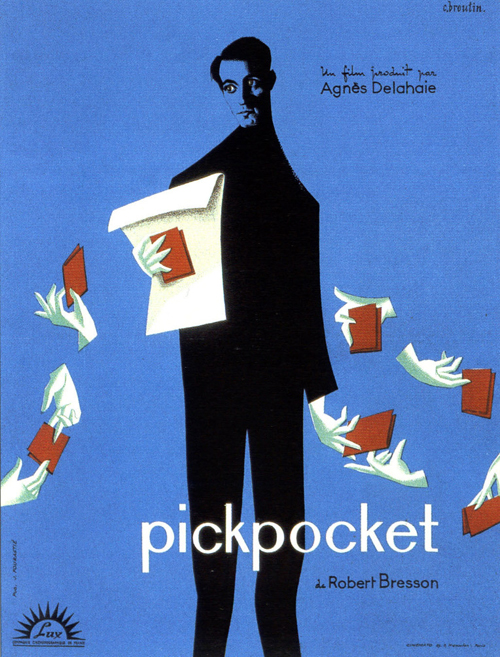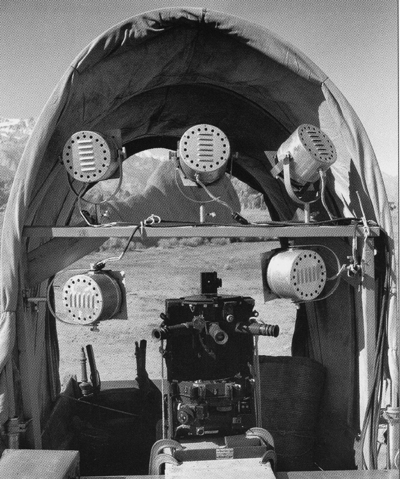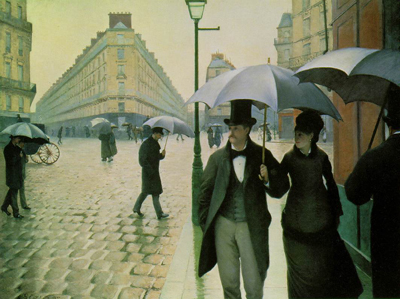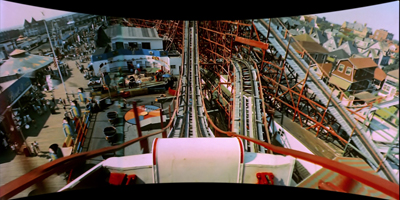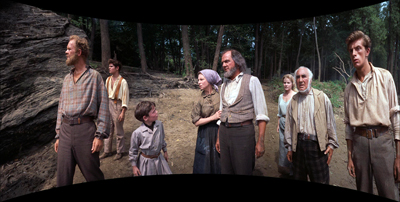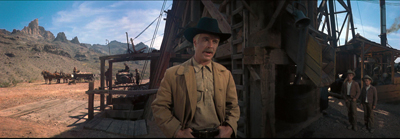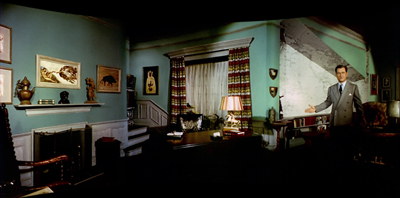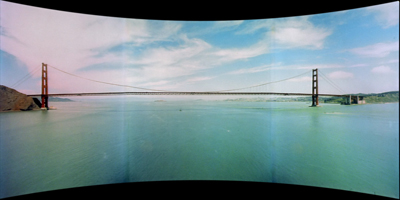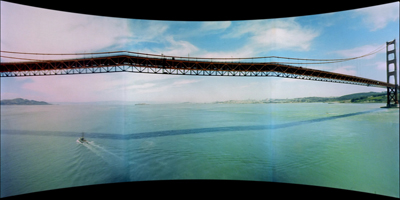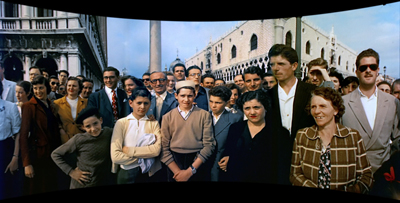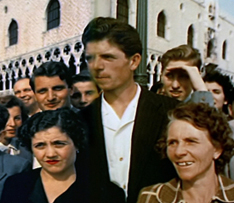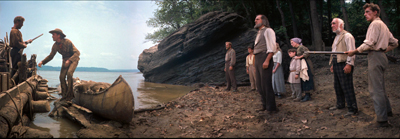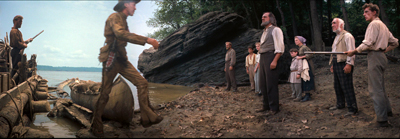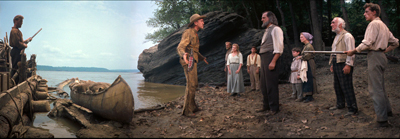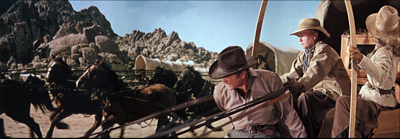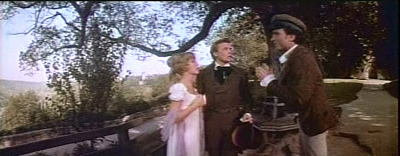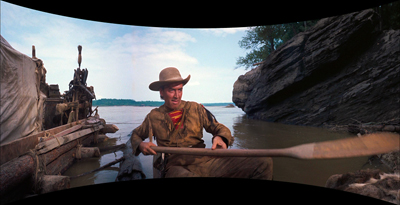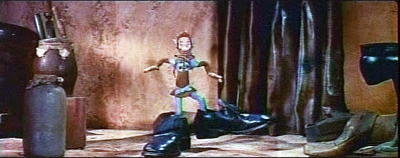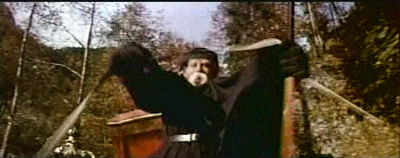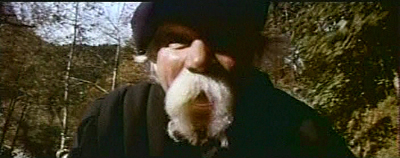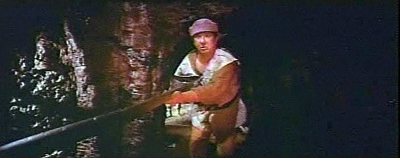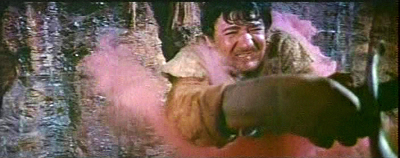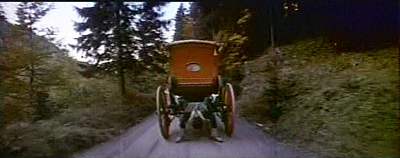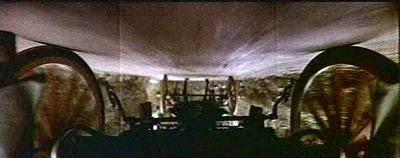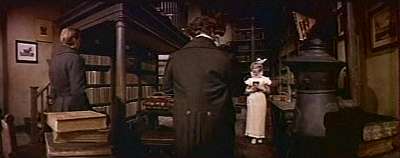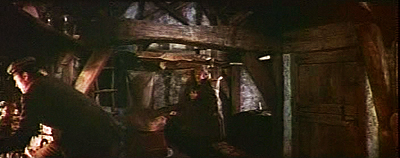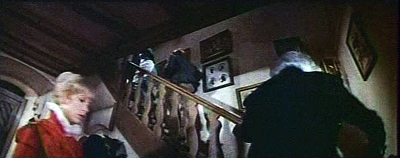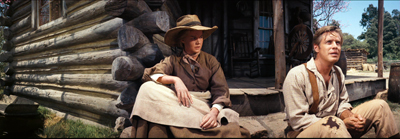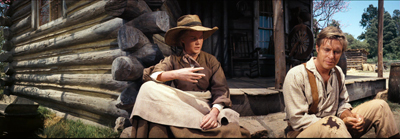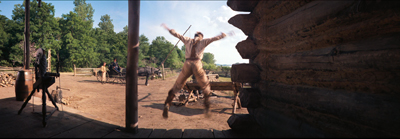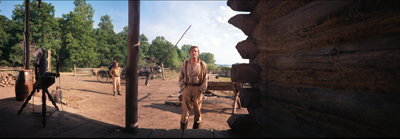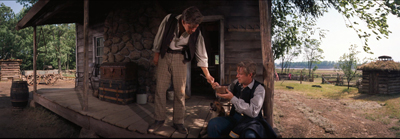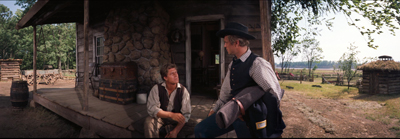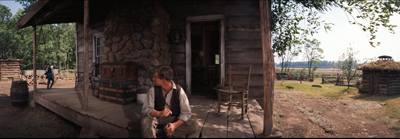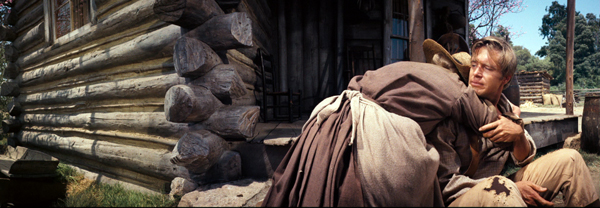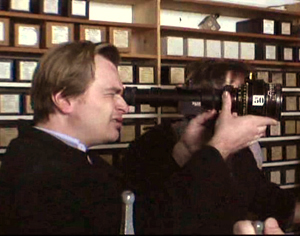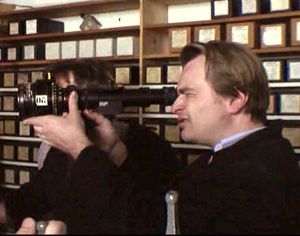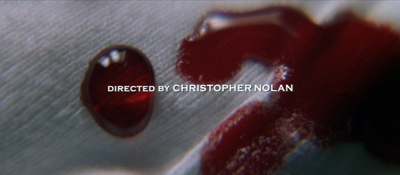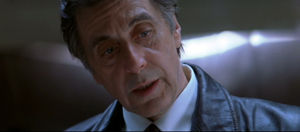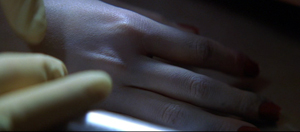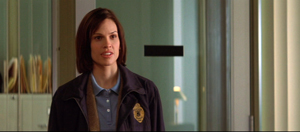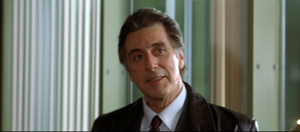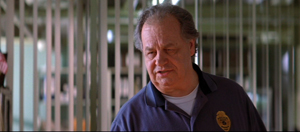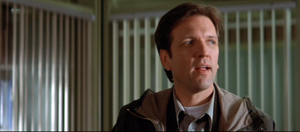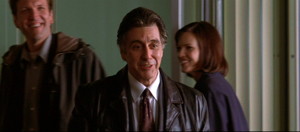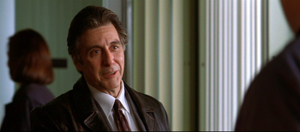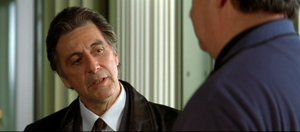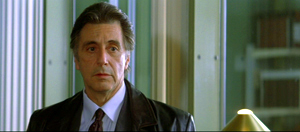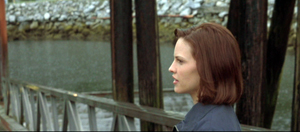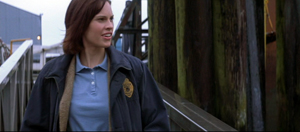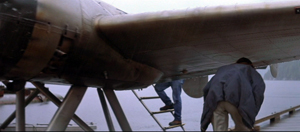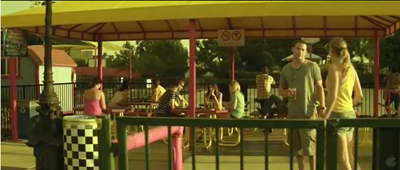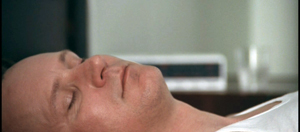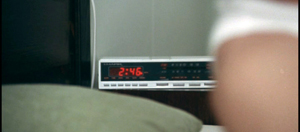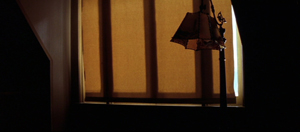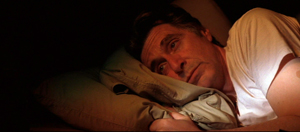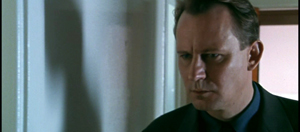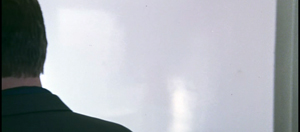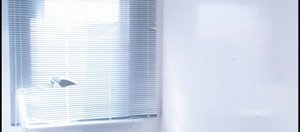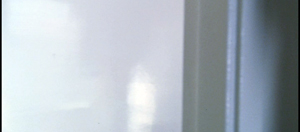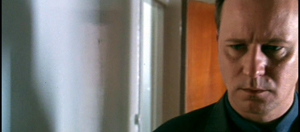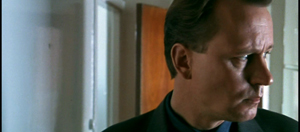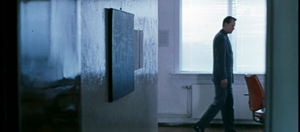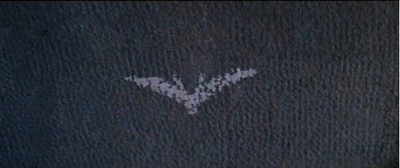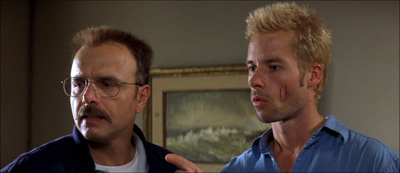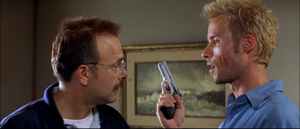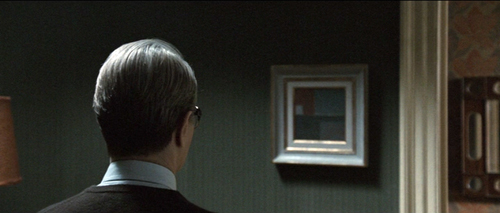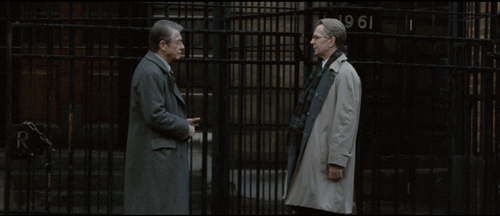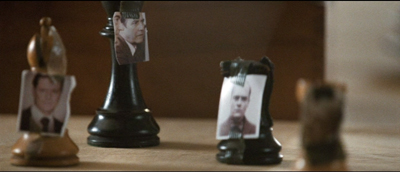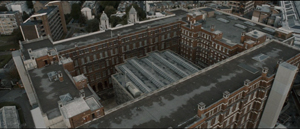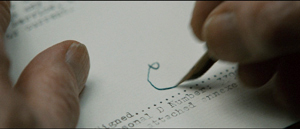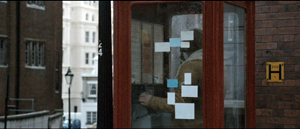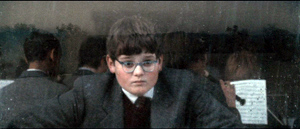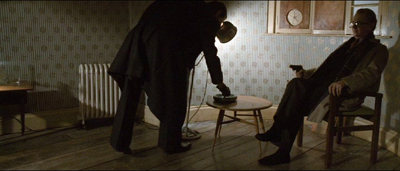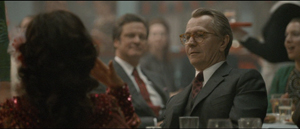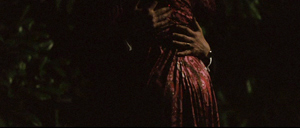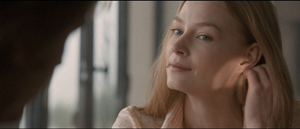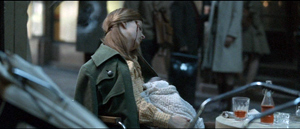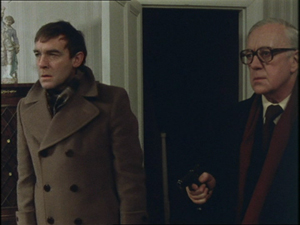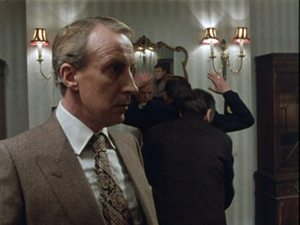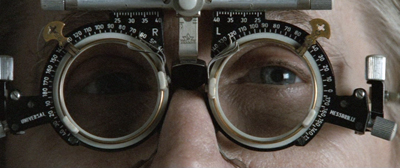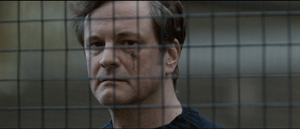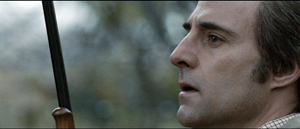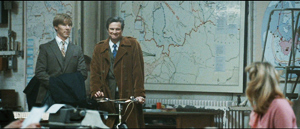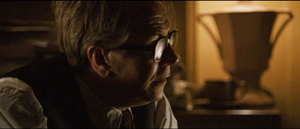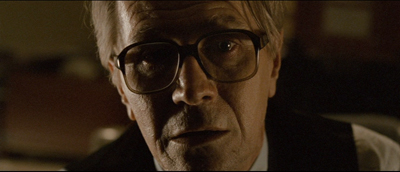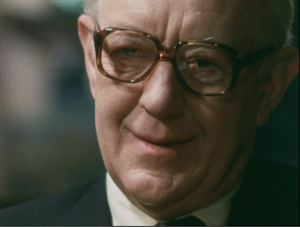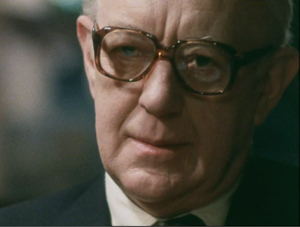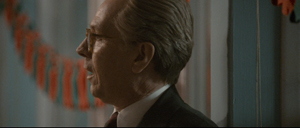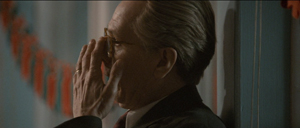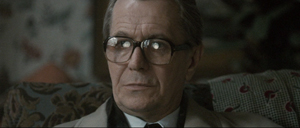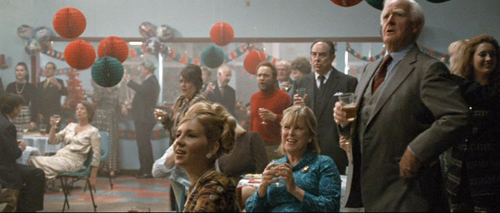Archive for the 'Readers’ Favorite Entries' Category
News! A video essay on constructive editing
DB here:
In connection with our textbook, Film Art: An Introduction, we’ve created several videos examining film techniques. Thanks to Peter Becker and Kim Hendricksen of Criterion Classics and Janus Films, we’ve been able to include clips from film classics, from Ashes and Diamonds to Ugetsu Monogatari. Because our publisher McGraw-Hill sponsored the production of these pieces, most of them are on a dedicated website called Connect, accessible only to students and teachers using the book in courses. We’ve made one video freely available on Criterion’s own site, where Kristin discusses some editing techniques in Agnès Varda’s Vagabond.
But not everybody who reads Film Art is in a course using the online supplements. And some people who aren’t reading Film Art might still enjoy learning more about the topics we cover. Moreover, we’ve had such good response to the Connnect clips that we decided to create a longer, more wide-ranging piece, also suitable for classrooms. So we prepared another video and today are making it available to anyone.
The Connect pieces mostly concentrate on single scenes, whereas this one roams across several films before focusing on a single example. Specifically, we look at the technique of constructive editing, which we discuss in Chapter 6 of FA. The video draws examples from silent films including Harold Lloyd’s Number, Please? (1920) and Lev Kuleshov‘s Engineer Prite’s Project (1918), while our more recent examples include The Social Network and The Ghost Writer. Thanks again to Criterion, the extract we focus on comes from Bresson’s brilliant Pickpocket (1959).
This piece is produced by Erik Gunneson, a local filmmaker who did an excellent job on the Connect materials. I wrote the script and narrated. (A cold I couldn’t shake off betrays itself in my voice.) We did the work in our production facility here at the University of Wisconsin–Madison Department of Communication Arts.
The links flagged above indicate blogs that are related to this new video. Some others are “What happens between shots happens between your ears” and “The Movie looks back at us” and “They’re looking for us.” There’s also “Three nights of a dreamer,” discussing a passage in In the City of Sylvia that may be a slantwise homage to Bresson’s editing technique.
Just to be clear: The twelve-minute video is available to anyone who’s interested. You can watch it below or on Vimeo. Erik, Kristin, and I hope you enjoy it.
PS 4 November 2012: Our discussion of the Kuleshov effect has led some to ask us whether the several videos on YouTube are authentic footage of Kuleshov’s experiments. Alas, they are not, but Kristin and I don’t know their provenance. However, in Oksana Bulgakowa’s documentary on the Kuleshov effect, available on YouTube, there are some fragments of the surviving footage, starting at 4:28. Oksana has also helped complete the experiment by inserting a substitute for a missing shot. In addition, I’m reminded by Joe McBride and Katharine Spring of Hitchcock’s famous explanation of the Kuleshov effect, available on the DVD, A Talk with Hitchcock. An excerpt from that is posted on YouTube, probably illegally.
The wayward charms of Cinerama
From Cinerama Holiday souvenir book, 1955.
DB here:
Two slumbering potential giants stirred in the last months of 1952, and as 1953 got underway the motion picture industry was faced with the greatest upheaval since sound films revolutionized the industry nearly 26 years ago.
Winfield Andrus, “3-D Finding Its Place,” The 1953 Film Daily Yearbook (New York 1953), 147.
Andrus was referring to 3D and to Cinerama, two technical marvels that promised to revive American filmgoing in the postwar era. In the short term, that didn’t happen. 3D died quickly, and Cinerama remained a novelty before expiring in 1962. But eventually 3D became viable, as the last decade has shown. Moreover, Cinerama’s impact was felt throughout the 1950s. Studios competed with it by introducing other widescreen formats, stereophonic sound, and extravagant roadshow productions. Cinerama, people are starting to point out, was a prototype of what Imax has become. Just as we’re now more interested in classic 3D (see my entry on the reissued Dial M for Murder), we ought to take another look at Cinerama in its more or less pure state.
Devoted aficionados like John Harvey of the New Neon Cinema in Dayton have kept Cinerama alive in theatres, and the challenge has been taken up by other venues. One of the most passionate advocates has been David Frohmaier, whose documentary Cinerama Adventure graced our Wisconsin Film Festival some years back. That documentary showed up on the 2008 DVD release of How the West Was Won, and it’s an essential, affectionate introduction to this most ungainly of film formats.
Now Frohmaier has brought us the 1952 film that started it all. This Is Cinerama has just been released by Flicker Alley, one of our most exacting and adventurous DVD publishers. The whole meticulous package–the film itself, presented in Frohmaier’s Smilebox display, along with an abundance of extras—offers a good chance to think about what Cinerama amounted to.
Cinerama had its ups and downs over a decade. Control of the technology and the venues shifted unpredictably, as did the revenues and profits. But I think that Cinerama’s unique accomplishment lies partly in its unintended consequences. Seeking to become the most realistic form of cinema yet known, Cinerama demonstrates how enjoyably un-realistic, even surrealistic, movies can be.
One hell of a demo
When This Is Cinerama opened at the Broadway Theatre in Manhattan on 30 September 1952, it presented itself as the ultimate package of new entertainment technologies. It was of course in color, which was still something of a rarity in motion pictures. It used stereophonic sound, with five speakers behind the screen and two in the auditorium. The screen itself was a wonder: it was seventy-five feet wide and about 23 feet high, bent in a 146-degree arc. That made the display span fifty feet. Later, some screens would be nearly a hundred feet long and over thirty feet high.
All who saw the film felt that this was an immersive experience. The goal, claimed Cinerama’s inventor Fred Waller, was to approximate what our eyes take in, including peripheral vision. Indeed, Waller claimed that our sense of depth in the world and an image depended on peripheral information. Anyone who has been in a wraparound theme-park attraction can attest to the fact that an image stretching to the edges of sight can provide a pretty compelling illusion, especially if the images carry us forward. You can undergo this illusion in Disney’s Circle-Vision 360°.
Cinerama’s colossal screen size and deep curve dictated a new approach to image-making. No standard 35mm frame could fill such a wide display without losing resolution. The scale of the show demanded three projectors, each trained on one-third of the screen. The image became a triptych, with thin overlaps or “blend lines” demarcating the panels. Naturally, all three had to be exactly aligned and kept in strict synchronization. If one film reel lost frames through a mishap, for future shows projectionists snipped the corresponding frames out of the other two reels.
The projectors were initially housed in separate booths, with a projectionist in charge of each. A fourth booth was given to the sound mixer (off to the right side in the above diagram), who oversaw the multiple track playback at each performance. Yet another staff member was in charge of monitoring the whole performance. Interestingly, the projectors were said to be placed level with the screen, in order to avoid any keystoning distortions of the display. But the diagram above, along with the Cinerama displays I’ve seen, position the projectors fairly high in the auditorium.
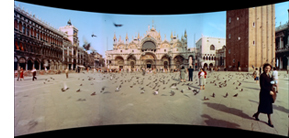 The image looked something like the still on the right. Even in this tiny image you can see slight differences between the panels and vignetting along the joins. Projectionists had to ensure that the three panels yielded comparable illumination and color temperature. Each projector’s gate had a little gadget known as a “jiggolo” that ran rapidly along the edges of the frame to blur the blend lines.
The image looked something like the still on the right. Even in this tiny image you can see slight differences between the panels and vignetting along the joins. Projectionists had to ensure that the three panels yielded comparable illumination and color temperature. Each projector’s gate had a little gadget known as a “jiggolo” that ran rapidly along the edges of the frame to blur the blend lines.
To gain resolution, each frame on the film strip used about twice the image area of conventional film. Surprisingly, the image area wasn’t much wider than normal film but it was 1 1/2 times the normal height (that is, 6 perforations high rather than the usual 4). To allow more frame space, the soundtrack was played on a separate magnetic film reel. The resulting images yielded very high resolution.
These sprawling images came from three cameras interlocked into a single bulky unit. The lenses were angled at 48 degrees to one another, turned inward to cross at a precise focal point. The camera lenses, all purpose-made, had a focal length of 27mm–another factor that would yield some striking pictorial effects. All three lenses shared a common shutter and had interlocked diaphragms to ensure comparable exposure. Because flicker would be disturbing on such a wide display, particularly on the edge panels, the film ran at 26 frames per second rather than the usual 24. The aspect ratio varied between 2.6:1 and 2.77:1.
This Is Cinerama was what we’d today call a demo. Lowell Thomas, one of the backers of the process, noted that if they’d told a story with actors, the emphasis would be taken off Cinerama itself, which was “a major event in the history of entertainment.” “The logical thing,” Thomas remarked, “was to make Cinerama the hero.”
The result was a travelogue (a word Thomas hated). After Thomas’ prologue, the film proper opens with the famous ride on a plunging rollercoaster. Then come episodes devoted to the canals of Venice, some church choral music, Scottish pipers, Viennese boy choristers, Spanish dancers, and an excerpt from Aida performed at La Scala. During the intermission Thomas inserts another demo, this time of the surround-sound effects. (We have to remember that stereophonic sound was a big novelty at that point; stereo LPs came later.) The bulk of the second part is spent at the Cypress Gardens leisure park, providing images of handsome men and women at play and climaxing in some exciting water-skiing. This is sort of double product placement–not only promoting the park but also water skis, another Fred Waller invention. The film ends with an awe-inspiring flight crisscrossing America, from New York and the Pentagon to the Golden Gate Bridge, and back to the rugged terrain of the West and Southwest.
 In an essay for Cahiers du cinéma, the late Chris Marker pointed out that the film amounts to a religious-popular spectacle. For all the globe-trotting of the first part, the last half is a paean to the splendor that is the postwar USA. The last word spoken, or rather sung, in the film is “America.” Indeed, as many have pointed out, the word Cinerama is an anagram for American. I’ve sometimes wondered about the logo, that peculiarly zigzagged string of letters. It suggests a crumpled snippet of film, with squarish frames like our vertical panels, and its bumpiness evokes the ups and downs of a roller coaster. But there’s no mistaking the logo’s recurring color scheme of red, white, and blue.
In an essay for Cahiers du cinéma, the late Chris Marker pointed out that the film amounts to a religious-popular spectacle. For all the globe-trotting of the first part, the last half is a paean to the splendor that is the postwar USA. The last word spoken, or rather sung, in the film is “America.” Indeed, as many have pointed out, the word Cinerama is an anagram for American. I’ve sometimes wondered about the logo, that peculiarly zigzagged string of letters. It suggests a crumpled snippet of film, with squarish frames like our vertical panels, and its bumpiness evokes the ups and downs of a roller coaster. But there’s no mistaking the logo’s recurring color scheme of red, white, and blue.
Party like it’s 1952
As a novelty, This Is Cinerama succeeded, running for over two years in New York. The system was installed in big-city theatres around the country. At a time when the average price of a movie ticket was $.46, the high-end seats for a Cinerama feature cost $2.80, or $24.34 in today’s currency. The Cinerama organization produced four more episodic travel-centered pictures: Cinerama Holiday (1955), The Seven Wonders of the World (1956), Search for Paradise (1957), and Cinerama South Sea Adventure (1958). Another picture made in a rival three-panel technology, Windjammer (1958), wound up in Cinerama venues as well. By 1957, Variety announced, the first three releases had grossed $60 million worldwide.
The problem was that on those grosses, profits came to only $6 million. Eighty percent of the box office take was used up in operation of the theatres.Morever, the complexity and cost of a Cinerama system meant that very few venues existed; by 1959, there were about twenty screens in the US and another eight or ten abroad, and not all were operating. In addition, overall US movie attendance was dropping, from about 47 million weekly in 1954 to 32 million in 1959.
New management succeeded in opening many more Cinerama theatres on a franchise basis, but the company needed fresh product as well. A coproduction deal was struck with MGM to use the process on fictional features. The results were The Wonderful World of the Brothers Grimm (1962) and How the West Was Won (London premiere, 1962; US release, 1963). To expand the audience, these films were also released in anamorphic widescreen to non-Cinerama venues.
Both films won large audiences, but they failed to make a profit. Soon the company’s theatres began exhibiting 70mm film releases under the Cinerama brand. The films were shown on curved screens, but with single-lens projection. The first of these releases was It’s a Mad, Mad, Mad, Mad World (1963); eventually even 2001: A Space Odyssey (1967) would be exhibited in “Cinerama.” In the course of these years, the company was acquired by Pacific Theatres, where it still resides. Classic triptych Cinerama was gone.
I never saw it in its prime.
I did see How the West in its original anamorphic release, and that has stayed with me for a couple of reasons. First, I was moved by it. It’s kitsch in many ways, but there are several exciting and touching scenes. Moreover, even as a squeaky-voiced teen I recognized something genuinely weird about the way it looked. Its imagery haunted me, though I didn’t have ways to understand them. Many years later, writing portions of a book that became The Classical Hollywood Cinema, I couldn’t watch any of the Cinerama travelogues in archives. I had to content myself with watching pink, cropped 16mm anamorphic copies of How the West Was Won. In all, it was very hard to get a sense of what the thing looked like (let alone sounded like).
Not until 2003 did I see both This Is Cinerama and How the West Was Won in the three-panel format, during a conference on widescreen cinema held at the National Media Museum in Bradford, England. That experience was wonderful, and it left me wanting to study the films more closely.
Now I can, and you can too. David Strohmaier has devised a transformation that captures the shape of a Cinerama projection. He calls it the Smilebox. The Flicker Alley DVD of This Is Cinerama is in Smilebox, as you see from my Venetian image above. Warner Bros’ 2008 Blu-ray release of How the West Was Won provides both a Smilebox version and a wider-than-CinemaScope letterbox version.
Through painstaking restoration by Greg Kimble and others, the films look clean and bright. Digital cleanup has regularized the color values from panel to panel and nearly eliminated the blend lines. The result conforms to what the makers would surely have preferred–a greater sense of uniform tonality, light, and space across the frame than surviving Cinerama images have.
For anybody interested in the history of American cinema, the Flicker Alley DVD is essential. It provides a long-missing chapter in the development of widescreen filmmaking. This Is Cinerama is a documentary that is also a document of postwar American pride, of film technology, and of the movie business. But I think it represents even more. For the most part neither Smilebox nor digital restoration has removed the peculiarities that, perhaps perversely, fascinate me about this unique format.
Nice big image you got here. Be a shame if anything happened to it.
Cinerama camera in a mock covered wagon for How the West Was Won.
Like any picture-making process, Cinerama captures the three-dimensional world on a two-dimensional surface. Unusually in the history of cinema, it does it with a semicircular array of cameras. The images from those cameras are projected on a corresponding semicircular surface, in the hope that they will simulate not only the spatial layout in front of those three lenses but also the way the world looks to us.
Fred Waller thought that his invention provided greater realism, because our vision subtends a horizontal arc wider than that of conventional camera lenses. Fred fell a few degrees short, though. Claiming that we take in about 160 degrees, he thought that 146 degrees was a good approximation, but our visual field is actually a bit wider than 180 degrees. (Without turning our head, we can roll our eyes.) More important, though, is the assumption that a faithful image of the world should try to capture the curvature of the image as it passes through the cornea to the retina. We see a bowed world, many have claimed, so our pictures should present the way things look.
Yet there’s a difference between visual sensation and visual perception. Even if the light from the world hits our photoreceptors in a partial or distorted way, what we see is regular and unified. On our retinas, near things loom large and distant things look tiny, but we’ve evolved to adjust to the distortions in early stages of vision and see things in normal size. A person ten feet away is twice as large on our retina as somebody twenty feet off, but that’s not the way they look. We don’t see our retinal image, any more than we see the wildly misshapen image of the world projected to brain areas. The eye is a part of the brain, and the brain reworks the stimulus–cleans it, enhances it, corrects it, straightens it out, and gives it a stability that isn’t there in the raw input.
For the most part, normal camera lenses approximate the way the world looks to us after our brain has processed visual signals. Most images show straight-edged walls and sidewalks, railroad tracks meeting at the horizon, proportional human beings. When Cinerama or other nonstandard image-making technologies present distortions to our eyes, we take them for what they are: not “what we really see” but rather pictorial displays creating distinct effects of their own.
Hence the irregular appeals of Cinerama. Suppose we’re not interested in seeing the world as it registers on our sensory system. Suppose we’re interested in exploring uncommon pictorial effects. If we suppose all that, we can have the sort of fun watching Cinerama that we get from this 1877 picture by Caillebotte (Paris Street, Rainy Day), a virtuoso reworking of geometric space.
Take image sharpness. In the 2003 Bradford shows, I was overwhelmed by just how precisely distant objects registered. This was partly due to the greater resolution of a bigger image area, partly to the use of wide-angle lenses with breathtaking depth of field in brilliant sunlight. I can’t illustrate some of the most dazzling effects here, including the sight of a very distant bathing beauty racing through a crowd and up to the foreground in the Cypress Garden sequence of This Is Cinerama. But if you have a large home theatre monitor or projected display, you might be able to spot her. Here I’ll just mention how the farthest stretches of the famous roller-coaster stand out crisply, and in big-screen projection, the people in the far distance do too.
Such short-focal-length lenses distort the visual field in predictable ways. For one thing, they make horizontal lines bow upward or downward. For this reason, Cinerama DPs were at pains to keep the horizon near the center of the shot and to avoid or cover contours parallel to the horizon. Linus Rawling’s canoe oar bends disconcertingly in the central panel even before it hits the blend line and shoots off on its own.
Verticals can get distorted as well. On the edges of each panel, human figures can look bulged, pinched, or oddly torqued.
Cinerama’s triptych format complicates perspective effects by welding three wide-angle images together. When presenting built environments, often each panel displays its own distinct vanishing point–sometimes central, sometimes angular, sometimes both. The results recall the Caillebotte picture, all acute angles and avenues flung out to left and right.
One cinematographer tells us that “special sets had to be built with curves and bends to rectify the false perspective inherent in three-camera systems.” But often we get contorted interiors. Dr. Caligari might feel at home in Lowell Thomas’ office.
The blend lines add their own constraints. From a distance, the Golden Gate looks very planar, but as our plane swoops nearer, the horizon remains flat while the bridge develops a couple of kinks.
For staged action, veteran cinematographer William Daniels warned that “We invariably consider the blend lines first, then plot and stage the action to suit the camera setup.” Most obviously, directors had to keep people away from the panel joins. We can see the unfortunate result in this image from This Is Cinerama. The gent on the far right is at once pinched and bulged, and the building in the B and C panels gets the Caillebotte treatment. Worse, a young Venetian man’s head on the blend line undergoes an unfortunate warping.
When a figure moves from panel to panel, the wide-angle distortions combine with the panel edges to create a faceted, almost cubistic space. Here’s the first anomaly I spotted when watching How the West Was Won as a kid in 1963.
As Linus is walking toward Mr. Prescott, James Stewart seems to stride diagonally forward a bit (in the A panel). After he pivots, he grows very large as he starts to walk straight (the B panel). , then stride diagonally into depth (the third panel). Each wide-angle lens makes people swell or shrink as they come to or from the camera, and with the creases supplied by the blend lines, scenes like this become attractively odd. With the panels ironed out, we see people taking strangely roundabout paths to one another.
The effect is even more noticeable in big action scenes, when horizontal movements that are really parallel seem to peel off from one another. During the Indian chase, the wagons are fleeing alongside one another, as a back-projection shows. But the more dynamic angle on the wagon teams creates an image that hits you like a cold shower.
To the audience in front of a curved screen, the movement in the second shot would have looked somewhat (but not entirely, I think) more linear. For us, we see a perspective we’ve never seen before, with wagons diverging from one another but neither getting smaller or larger. And how about the dizzy swerve that the pathway in panel C takes when it reappears in panel A?
The angled-triptych format obliged actors to adjust their performances in counterintuitive ways. “An actor in a side panel,” wrote Daniels, “cannot look directly at one in the center panel when speaking to him, but must cheat a little–direct his eyes a little behind the one in the center.” Here’s an example from The Wonderful World of the Brothers Grimm that stands out when seen in the flat format. Wilhelm is speaking to Greta from the C panel, but it seems that Laurence Harvey didn’t cheat his body quite enough. He seems to be speaking past her, an effect not helped by the disproportionate size of his body.
This Is Cinerama is obsessed with centering its action, but sometimes the center seems strangely off-kilter. With the water-skiing women shown earlier, the three cameras create a sort of hollow viewing station. Why do the flanking skiiers seem to be moving at angles to the central trio? Why do the ropes of the central skiiers fly off (jaggedly) to one side, rather than expand directly towards us, like train tracks?
As with the wagon teams, you have to imagine diagonal actions as rotated inward to parallel one another during projection. What you see is not what you’d get in the theatre. But also, what you see is something you’ve never seen in a movie before.
Most of these effects are heightened by the inability of the three-eyed monster to record close-ups. Because of the short focal length, the camera unit sat very near the actors: for a shot from the waist up, the central lens was between one-and-a-half and three feet away. Putting the camera so close necessitated lights being attached to the camera unit. But normally close-ups were avoided, so the human figures never dominate their locales. These movies are, more than most, about space–however buckled and bizarre that space might be.
Because of the panels, panning shots were to be avoided, but certain kinds of camera movement forward were welcomed. The signature Cinerama shot is the shot plunging toward the vanishing point–a boat rushing through the water, an aerial view banking toward the horizon. Even though the blend lines made shapes and edges wrinkle, this gigantic, embracing image streaming toward viewers gave a compelling illusion that they were hurtling forward.
The distortions are less visible from a perfect vantage point in a Cinerama auditorium–presumably, as close as you can get. Distortions on the display edges would be minimized by peripheral vision, which isn’t good at registering detail. Presumably some of the curvilinear shapes, like Linus’ oar, and those kinks across the blend lines, would be less egregious if viewed straight on. Watching from the front row in Bradford, I recall seeing these distortions, but they didn’t seem as vivid.
Naturally, not everybody in the auditorium has a perfect vantage point. In the original screenings, people who had sat on the sides complained that movement on the nearest flanking panel seemed to flow upward. Smilebox, which respects the overall geometry of the display, still yields disparities. Linus’ oar still curves, though not as pronouncedly.
My images here, and yours on your home screen, are unavoidably mapping a curved display onto a flat surface, so there will still be anomalies. If you want to try cutting down on them, sit close to the Smilebox display. I prefer to sit back and enjoy their weirdness.
They’re features, not bugs
What about the films themselves? Arguably no great film was made in the format, but all the releases probably have some admirers. I want to end by talking about the two I find most appealing.
Cinerama’s travelogues were episodic, designed to show off features of the process in different filming situations. The two fiction features had to highlight the process and tell a coherent, engaging story. They too tend toward the episodic, but they handle that option in different ways. And stylistically, both work against the official “rules” of the new format.
The Wonderful World of the Brothers Grimm, an entertaining family film, employs a frame story. The brothers are assigned to write the family history of the local Duke. Jacob, an expert linguist, does his job dutifully, but Wilhelm plays hooky to find and write up fairy tales he hears. His zeal to collect stories leads to the loss of their commissioned manuscript, and he falls ill, during which several fairy-tale characters come to visit him. Eventually Jacob is honored by the Royal Academy, but it’s Wilhelm who gets enduring glory by being swarmed over by hordes of children anxious to hear his latest tale. Within this overarching plot, three of the stories are enacted using various special effects, including puppet animation. Some of these shots appear to have been shot in a non-Cinerama format and “paneled” afterward.)
It’s tempting to ascribe the frame story’s direction to Hollywood veteran Henry Levin and the embedded fantasies to co-director George Pal. To the connoisseur of Cinerama, those fantasy passages offer some delights. If anybody told Pal about the rules for shooting in the format, he ignored them. The fairy tales give us whirling camera movements, bumpy subjective shots, and frequent assaults on the audience in the manner of 3D. During a wild coach ride, the coachman hurls himself to and from the camera. Later, a knight’s bumbling servant slays a dragon in lunging close-up.
You can even take certain passages as sly parodies of the brand. The Woodsman in the first tale has hitched a ride on the back of the coach, and he stoops to look underneath. Cut to his point-of-view: an upside-down version of a signature Cinerama shot.
Whoever directed the frame story scenes, however, was fairly bold too, moving his actors in zigzag patterns more flamboyant than the blocking of How the West Was Won. And instead of the small, high sets recommended for the format, Wonderful World shoots in throne rooms and palace salons that seem to stretch on forever. In smaller sets, like the brothers’ cottage, their friend’s bookshop, and especially the lair of a witch, the compositions take advantage of crannies and oddly angled planes that enhance the exaggerated distances.
As in German Expressionist cinema, the distortions seem to suit an atmosphere of fantasy. There’s even a massive violation of one of the basic rules of Cinerama: avoid tilting the camera. High and low angles were likely to exaggerate any distortions in the panels. Yet Levin, or Pal, or both occasionally throw in expressive angles, most strikingly a low angle showing Wilhelm’s family and friends ascending to his sickroom.
The Wonderful World of the Brothers Grimm solves the problem of the episode film by giving us a frame story. How the West Was Won solves it by a more threaded structure. A family saga creates branching stories that show three generations of kin participating in the winning of the frontier. The story acknowledges, briefly, the conquest of indigenous peoples–the “liberal Westerns” of the 1950s haven’t been ignored–but slavery doesn’t play a significant role. This is a story of white people.
The Prescott clan sets out on the Erie Canal, but on the rivers all but two of them lose their lives. The warm, slightly romantic Eve settles with the trapper Linus Rawlings on a farm in Ohio, while her sister Lilith ventures west. Eve’s son Zeb joins the Union forces in Civil War and later moves west with the railroad, eventually becoming a marshall. Lilith joins a wagon train, takes up with a gambler, inherits a worthless mine in California, and reunites with her lover on a riverboat. They become entrepreneurs investing in the railroad system. Near the end of the century, Lilith loses her fortune and joins Zeb, now retired, and his wife and children. But before they can settle down on Lilith’s inherited Arizona ranch, Zeb has to settle a score with a bandit who intends to rob a train. The film falls into sections specified in the credits–The Rivers, The Plains, and so on–but not in the film, though the parts usually end with fades.
Marker might note that How the West Was Won revives the piety and chauvinism on display in This Is Cinerama. The Prescott women found a kind of holy family, bound, as one song puts it, “for the Promised Land.” Some writers thumb through the phone book to get names for their characters, but screenwriter James R. Webb seems to have favored the Old Testament. Eve, living up to the positive side of her name, becomes the first woman of the new land. In forcing Linus to become a farmer, she helps turn the wilderness into a garden. Lilith, whose name associates her with sexuality and demonic possession, becomes a dance-hall girl and eventually a millionairess, but she has no children. At the end she returns to her nephew, Zebulon, named for her father; in the Old Testament he is the founder of a tribe. And Zeb has named his daughter Eve. The family abides in an endless cycle, its members replacing one another and its history intertwined with the full flowering of the United States.
The film ends with the sort of God’s-eye views that conclude This Is Cinerama, but emphasizing the modern West, with its dams, roads, cities, even whorls of traffic. Interestingly, in the place of the forward rush of the earlier film, these aerial shots pull us backward, the classic mark of the end of a story. But the finale of the epilogue carries us forward once more, under the Golden Gate Bridge and into a sunburst over the Pacific. Since women have played a central role, no surprise that the final lyrics of the choral accompaniment celebrate heroes as “every mother’s son.” This country has reached its natural limit; beyond is heaven, and the chorus tells us, here at last is the Promised Land.
Most scenes are handled briskly, but with little nuance beyond what the actors bring to the story. The spectacle remains appealing, the music infectious, and the imagery always impressive–especially when it’s a little whacked out, as in my examples above and many other scenes of the film. Like The Wonderful World of the Brothers Grimm, this has shown that Cinerama can be edited rapidly. This Is Cinerama has only a little more than two hundred shots, but Wonderful World has a thousand, and How the West Was Won has over eleven hundred. The chapters of the latter yield some striking results: most average between eight and nine seconds, but John Ford’s Civil War segment averages nearly fifteen seconds, while the climactic Outlaws segment averages about five seconds.
That climactic sequence, directed like most of the film, by Henry Hathaway, makes splendid and varied use of the format. Despite a heavy reliance on back projection and several shots that seem not to have been made in the three-camera process, this monumental remake of The Great Train Robbery is a showcase for how Cinerama could create exciting action through staging and editing. To the advantages of Cinerama–forward drive, looming landscapes, and immersive sound–Hathaway and editor Harold Kress add percussive cuts of logs sliding this way and that, along with painful stunts, including one showing a man flung off a train and into a cactus.
By contrast, the Civil War sequence shows how a director can triumph over an inflexible format by relying on expressive stasis. Ford the pictorialist will carve striking compositions out of the constraints of Cinerama. He exploits the depth of the 27mm lenses, sometimes stationing all his figures in the central zone, as if he’s trying to preserve the 1.37 aspect ratio. At other moments he confines the action to a single flanking panel.
Sometimes Ford simply ignores the triptych format in order to split the frame in half or, say, two-fifths. He also gives his actors postures, props, and gestures that allow them to underplay. With Ford, even fresh-minted junior stars like Carroll Baker and George Peppard can give performances of gravity.
Ford’s creative choices stand out most strongly in two scenes set on the farm. In the first, Linus Rawlings has gone off to battle, and his son Zeb is itching to follow. Eve, now old, accepts with weary sadness that he will have his way. There’s a Griffithian two shot of Eve and Zeb on the porch, her arms dangling wearily and her right hand rising and falling as she asks Zeb about whether he’ll get a uniform. The hell with Cinerama, Pappy seems to say: Just fill up half the frame with the cabin to keep us fastened on the couple.
After a quick embrace, Eve dashes into the house. A porch shot that is virtually a Fordian doorway framing shows Zeb leaping with joy before he turns, sees something in the house, and halts in his tracks. Ford needn’t show us Eve’s grief. This is the most tactful shot in the whole film.
Soon enough Ford will recall this scene. Zeb has left for the war. Eve, kneeling at the family plot, prays to her father before slipping behind the rail. Her face is hidden, but her hands again express her resignation, and prefigure her death. She was never the same, her other son will say, after Zeb left.
These homestead passages are echoed by a scene at the end of the Civil War segment. Back from the war, Zeb learns of his mother’s death from his brother Jeremiah. The two sit on the porch sharing a dipper of water and recalling their father. Zeb rises to go, they shake hands, and we get another muted Fordian moment. Why move your actors when you can pose them?
Now the old director, a master of depth since the 1910s, bends this newfangled format to his own ends. Zeb leaves the frame, comes back in the far distance, and is finally blocked by the farmhouse, leaving Jeremiah quietly weeping.
That’s how you handle this busy, noisy new contraption, Ford seems to say. Dwell on moments of stillness and pathos. Use handshakes, embraces, a drooping black shawl. Keep the action in a well-defined zone. And treat this as a silent movie.
The most comprehensive account of Cinerama’s development is Thomas Erffmaier’s 1985 Northwestern Ph. D. thesis, The History of Cinerama: A Study of Technological Innovation and Industrial Management. Also invaluable are John Belton’s Widescreen Cinema (Harvard University Press, 1992) and Robert E. Carr and R. M. Hayes’ Wide Screen Movies (McFarland, 1988), usefully supplemented by Daniel J. Sherlock’s emendations here. A good older work is Michael Z. Wysotsky, Wide-Screen Cinema and Stereophonic Sound (Focal Press, 1971). Sheldon Hall and Steve Neale put This Is Cinerama into the context of postwar blockbusters in Epics, Spectacles, and Blockbusters: A Hollywood History (Wayne State University Press, 2010), Chapter 7. On the Web, restorer and cinematographer Greg Kimble provides a thorough and well-illustrated account of Cinerama at In 70mm.
Chris Marker’s “Le Cinérama” appeared in Cahiers du cinéma no. 27 (October 1953): 34-37.
Cinerama grew out of Fred Waller’s experiments with gunnery-training displays during World War II, as Strohmaier documents in Cinerama Adventure. Waller discusses this work in “Cinerama Goes to War,” New Screen Techniques, ed. Martin Quigley, jr. (Quigley, 1953), 119-126. This collection includes other pieces of value on Cinerama, 3D, CinemaScope, and other new technologies. It would be interesting to know if Waller’s efforts influenced, or were influenced by, psychologist J. J. Gibson’s comparable wartime experiments with aerial training films. Gibson’s ideas about how we grasp space through “optical flow” and centered perspective have obvious parallels with the Cinerama process. Waller was said to have been influenced by another psychologist, Adelbert Ames, Jr., one of the founders of 1950s “New Look” psychology. Waller’s belief that our peripheral vision was more important than stereopsis in determining depth echoes Ames’ hypothesis that convergence and binocular disparity were overrated as depth cues.
Greg Kimble provides a thorough overview of the making of How the West Was Won in a 1983 article for American Cinematographer, available here. I’ve drawn as well on William Daniels’ article “Cinerama Goes Dramatic,” American Cinematographer 43, 1 (January 1962): 28-29, 50-54. Also useful was Darrin Scott, “Panavision’s Progress,” American Cinematographer 41, 5 (May 1960): 302, 304, 320-322, 324. My quotation about readjusted sets comes from Scott’s piece.
Three-panel Cinerama features can be seen occasionally today at the Pictureville Cinema in Bradford, the Cinerama Dome in Los Angeles, and the Seattle Cinerama.
Simultaneously with This Is Cinerama, Flicker Alley has published a lavish Smilebox version of Windjammer, also prepared by David Strohmaier. That’s a whole other story.
P.S. 5 October: You never can tell. Jim Emerson forwards me this Indiewire report by Len Maltin on a new short made in three-panel Cinerama.
How the West Was Won.
Nolan vs. Nolan
DB here:
Paul Thomas Anderson, the Wachowskis, David Fincher, Darren Aronofsky, and other directors who made breakthrough films at the end of the 1990s have managed to win either popular or critical success, and sometimes both. None, though, has had as meteoric a career as Christopher Nolan.
His films have earned $3.3 billion at the global box office, and the total is still swelling. On IMDB’s Top 250 list, as populist a measure as we can find, The Dark Knight (2008) is ranked number 8 with over 750,000 votes, while Inception (2010), at number 14, earned nearly 600,000. The Dark Knight Rises (2012), on release for less than a month, is already ranked at number 18. Remarkably, many critics have lined up as well, embracing both Nolan’s more offbeat productions, like Memento (2000) and The Prestige (2006), and his blockbusters. Nolan is now routinely considered one of the most accomplished living filmmakers.
Yet many critics fiercely dislike his work. They regard it as intellectually shallow, dramatically clumsy, and technically inept. As far as I can tell, no popular filmmaker’s work of recent years has received the sort of harsh, meticulous dissection Jim Emerson and A. D. Jameson have applied to Nolan’s films. (See the codicil for numerous links.) People who shrug at continuity errors and patchy plots in ordinary productions have dwelt on them in Nolan’s movies. The attack is probably a response to his elevated reputation. Having been raised so high, he has farther to fall.
I have only a welterweight dog in this fight, because I admire some of Nolan’s films, for reasons I hope to make clear later. Nolan is, I think all parties will agree, an innovative filmmaker. Some will argue that his innovations are feeble, but that’s beside my point here. His career offers us an occasion to think through some issues about creativity and innovation in popular cinema.
Four dimensions, at least
First, let’s ask: How can a filmmaker innovate? I see four primary ways.
You can innovate by tackling new subject matter. This is a common strategy of documentary cinema, which often shows us a slice of our world we haven’t seen or even known about before—from Spellbound to Vernon, Florida.
You can also innovate by developing new themes. The 1950s “liberal Westerns” substituted a brotherhood-of-man theme for the Manifest-Destiny theme that had driven earlier Western movies. The subject matter, the conquest of the West by white settlers and a national government, was given a different thematic coloring (which of course varied from film to film). Science fiction films were once dominated by conceptions of future technology as sleek and clean, but after Alien, we saw that the future might be just as dilapidated as the present.
Apart from subject or theme, you can innovate by trying out new formal strategies. This option is evident in fictional narrative cinema, where plot structure or narration can be treated in fresh ways. Many entries on this blog have charted possible formal innovations, such as having a house narrate the story action, or arranging the plot so as to create contradictory chains of events. Documentaries have experimented with a film’s overall form as well, of course, as The Thin Blue Line and Man with a Movie Camera. Stan Brakhage’s creation of “lyrical cinema” would be an example of formal innovation in avant-garde cinema.
Finally, you can innovate at the level of style—the patterning of film technique, the audiovisual texture of the movie. A clear example would be Godard’s jump cuts in A Bout de souffle, but new techniques of shooting, staging, framing, lighting, color design, and sound work would also count. In Cloverfield and Chronicle, the first-person camera technique is applied, in different ways, to a science-fiction tale. Often, technological changes trigger stylistic innovation, as with the Dolby ATMOS system now encouraging filmmakers to create sound effects that seem to be occurring above our heads.
I see other means of innovation—for instance, stunt casting, or new marketing strategies—but these four offer an initial point of departure. How then might we capture Nolan’s cinematic innovations?
Style without style
Well, on the whole they aren’t stylistic. Those who consider him a weak stylist can find evidence in Insomnia (2002), his first studio film. Spoilers ahead.
A Los Angeles detective and his partner come to an Alaskan town to investigate the murder of a teenage girl. While chasing a suspect in the fog, Dormer shoots his partner Hap and then lies about it, trying to pin the killing on the suspect. But the suspect, a famous author who did kill the girl, knows what really happened. He pressures Dormer to cover for both of them by framing the girl’s boyfriend. Meanwhile, Dormer is undergoing scrutiny by Ellie, a young officer who idolizes him but who must investigate Hap’s death. And throughout it all, Dormer becomes bleary and disoriented because, the twenty-four-hour daylight won’t let him sleep. (His name seems a screenwriter’s conceit, invoking dormir, to sleep.)
Nolan said at the time that what interested him in the script—already bought by Warners and offered to him after Memento—was the prospect of character subjectivity.
A big part of my interest in filmmaking is an interest in showing the audience a story through a character’s point of view. It’s interesting to try and do that and maintain a relatively natural look.
He wanted, as he says on the DVD commentary, to keep the audience in Dormer’s head. Having already done that to an extent in Memento, he saw it as a logical way of presenting Dormer’s slow crackup.
But how to go subjective? Nolan chose to break up scenes with fragmentary flashes of the crime and of clues—painted nails, a necklace. Early in the film, Dormer is studying Kay Connell’s corpse, and we get flashes of the murder and its grisly aftermath, the killer sprucing up the corpse.
At first it seems that Dormer intuits what happened by noticing clues on Kay’s body. But the film’s credits started with similar glimpses of the killing, as if from the killer’s point of view, and there’s an ambiguity about whether the interpolated images later are Dormer’s imaginative reconstruction, or reminders of the killer’s vision—establishing that uneasy link of cop and crook that is a staple of the crime film.
Similarly, abrupt cutting is used to introduce a cluster of images that gets clarified in the course of the film. At the start, we see blood seeping through threads, and then shots of hands carefully depositing blood on a fabric (above). Then we see shots of Dormer, awaking jerkily while flying in to the crime scene. Are these enigmatic images more extracts from the crime, or are they something else? We’ll learn in the course of the film that these are flashbacks to Dormer’s framing of another suspect back in Los Angeles. Once again, these images get anchored as more or less subjective, and they echo the killer’s patient tidying up.
Nolan’s reliance on rapid cutting in these passages is typical of his style generally. Insomia has over 3400 shots in its 111 minutes, making the average shot just under two seconds long. Rapid editing like this can suit bursts of mental imagery, but it’s hard to sustain in meat-and-potatoes dialogue scenes. Yet Nolan tries.
In lectures I’ve used the scene in which Dormer and Hap arrive at the Alaskan police station as an example of the over-busy tempo that can come along with a style based in “intensified continuity.” In a seventy-second scene, there are 39 shots, so the average is about 1.8 seconds—a pace typical of the film and of the intensified approach generally.
Apart from one exterior long-shot of the police station and four inserts of hands, the characters’ interplay is captured almost entirely in singles—that is, shots of only one actor. Out of the 34 shots of actors’ faces and upper bodies, 24 are singles. Most of these serve to pick up individual lines of dialogue or characters’ reactions to other lines. The singles are shot with telephoto lenses, a choice exemplifying what I called the tendency toward “bipolar” lens lengths in intensified continuity–that is, either very long lenses or fairly wide-angle ones.
Fast cutting like this need not break up traditional spatial orientation. In this scene, there are a couple of bumps in the eyeline-matching, but basically continuity principles are respected. As Nolan explains on the DVD commentary, he tried to anchor the axis of action, or 180-degree line, around Dormer/Pacino, so the eyelines were consistent with his position, and that’s usually the case here.
I can’t illustrate all the shots here, but despite its more or less cogent continuity, the scene seems to me choppy, uneconomical, and fairly perfunctory in its stylistic handling. Nolan makes no effort to move the actors around the set in a way that would underscore the dramatic development. Because of the rapid editing, characters’ lines and gestures are cut off or unprepared for. There is no effort to design each shot, à la Hitchcock, to fit the line or reaction of the actor. Most shots are excerpted from full takes, all from the same setup. The most obvious example is the setup that pans to show Dormer as he comes in, stops, and reacts to the conversation. Thirteen shots are taken from that setup (not necessarily the same full take, of course, as the last frame here shows).
In Nolan’s recent films, this avoidance of tightly designed compositions may be encouraged further because he’s shooting in both the 1.43 Imax ratio and the 2.40 anamorphic one. There remains a general tendency toward loose, roughly centered framings.
Somebody is sure to reply that the nervous editing is aiming to express Dormer’s anxiety about the investigation into his career. But that would be too broad an explanation. On the same grounds, every awkwardly-edited film could be said to be expressing dramatic tensions within or among the characters. Moreover, even when Dormer’s not present, the same choppy cutting is on display.
Consider the 23 shots showing Ellie greeting Dormer and Hap as they get off the plane. Again we have full production takes broken up into brief phases of action (it takes five shots to get Dormer out of the plane), with an almost arbitrarily succession of shot scales. When Ellie leaves her vehicle to go out on the pier, the action is presented in nine shots.
We can imagine a simpler presentation—perhaps after an establishing shot, we track with Ellie down along the dock (so we can see her smiling anticipation), then pan with her walking leftward into a framing that prepares for the plane hatch to open. Arguably, the need to show off production values—the vast natural landscape, the swooping plane descending—pressed Nolan to include some of the extra shots. They don’t do much dramatically, and the strange cut back to an extreme long-shot (to cover the change to a new angle on Ellie?) may negate whatever affinity with her that the closer shots aim to build up.
Swedish sleeplessness
Magic Mike.
Want an up-to-date comparison? Steven Soderbergh’s Magic Mike has a quiet, clean style that conveys each story point without fanfare. Soderbergh saves his singles for major moments and drops back for long-running master shots when character interaction counts. His cuts are just that; they trim fat. He doesn’t resort to those short-lived push-in camera movements that Nolan seems addicted to. He doesn’t waste time with filler shots of people going in and out of buildings, or aerial views of a cityscape. Soderbergh can provide an unfussy 70s-ish telephoto long take of Mike and Brooke walking along a pier and settling down at a picnic table in front of a Go-Kart track while her brother Adam materializes in the distance. In a single year, with Contagion, Haywire, and Magic Mike, Soderbergh has confirmed himself as our master of the intelligent midrange picture. To anyone who cares to watch, these movies give lessons in discreet, compact direction.
For a more pertinent contrast case, we can go back Insomnia’s source, the 1997 Norwegian film of the same name written and directed by Erik Skjoldbjaerg. Here a Swedish detective, vaguely under suspicion for an infraction of duty, comes to a town on the Arctic Circle for a murder investigation. The plot is roughly similar in its premise, but the working out is quite different, and I can’t do justice to it here. Let me mention just two points of contrast.
First, the cutting is less jagged. Skjoldbjaerg’s film comes in at ninety-seven minutes, about fifteen minutes shorter than Nolan’s, and its cutting rate is much slower, around 5.4 seconds. That means that many passages are built out of sustained shots, particularly ones showing the detective Jonas Engström walking or sitting in a brooding, self-contained silence. Also, this version finds ways to convey several bits of information concisely, in carefully designed shots. For a straightforward example: We see Engstrom’s eyes open, as he’s unable to sleep, and then he lifts his head. Rack focus to the clock behind him.
Nolan uses several shots to get across a comparable point.
As for subjectivity, Skoldbjaerg is just as keen to get us inside his detective’s head as Nolan is. At times he uses the sort of flash-cutting Nolan employs, so we get fragmentary reminders of the fog-clouded shooting. But Skoldbjaerg doesn’t tease us with unattributed inserts (Nolan’s flashbacks to Dormer’s framing of a suspect), and he never suggests, via images of the murder and its cleanup, that his detective can imagine the crime concretely. Instead, Skoldbjaerg often evokes his character’s unease through camera movements that upset our sense of his spatial location. The camera shows Engstrom striding into a room…and then swivels rightward to show him in his original location, as if he’s sneaked around behind our back.
Then Engstrom turns, and we hear a footstep. Cut to a shot showing that the sound is made by him, walking in another room.
I’m not going to suggest that Skoldbaerg innovates more radically than Nolan does, though most viewers probably are more startled by these devices than by Nolan’s. I think that the original Insomnia’s stylistic gamesmanship owes something to other precedents, going back to Dreyer’s Vampyr. What I find more interesting is that Nolan had available the prior example of these strategies from his Nordic source, and he still chose to go with the more conventional, cutting-based options.
The editing-driven, somewhat catch-as-catch-can approach to staging and shooting is clearly Nolan’s preference for many projects. He doesn’t prepare shot lists, and he storyboards only the big action sequences. As his DP Wally Pfister remarks, “What I do is not complicated.” Comparing their production method to documentary filming, he adds: “A lot of the spirit of it is: How fast can we shoot this?”
Throwing it against the wall
We can find this loose shooting and brusque editing in most of Nolan’s films, and so they don’t seem to me to display innovative, or particularly skilful, visual style. I’m going to assume that his strengths aren’t in the choice of subjects either, since genre considerations have kept him to superheroics and psychological crime and mystery. I think his chief areas of innovation lie in theme and form.
The thematic dimension is easy to see. There’s the issue of uncertain identity, which becomes explicit in Memento and the Batman films. The lost-woman motif, from Leonard’s wife in Memento to Rachel in the two late Batman movies, gives Nolan’s films the recurring theme of vengeance, as well as the romantic one of the man doomed to solitude and unhappiness, always grieving. If this almost obsessive circling around personal identity and the loss of wife or lover carries emotional conviction, it owes a good deal to the performances of Guy Pearce, Hugh Jackman, Christian Bale, and Leonardo DiCaprio, who put some flesh on Nolan’s somewhat schematic situations.
You can argue that these psychological themes aren’t especially original, especially in mystery-based plots, but the Batman films offer something fresher. The Dark Knight trilogy has attracted attention for its willingness to suggest real-world resonance in comic-book material. Umberto Eco once objected that Superman, who has the power to redirect rivers, prevent asteroid collisions, and expose political corruption, devotes too much of his time to thwarting bank robbers. Nolan and his colleagues have sought to answer Eco’s charge by imbuing the usual string of heists, fights, chases, explosions, kidnappings, ticking bombs, and pistols-to-the-head with sociopolitical gravitas. The Dark Knight invokes ideas about terrorism, torture, surveillance, and the need to keep the public in the dark about its heroes. Something similar has happened with The Dark Knight Rises, leaving commentators to puzzle out what it’s saying about financial manipulation, class inequities, and the 99 percent/ 1 percent debate.
Nolan and his collaborators are doubtless doing something ambitious in giving the superhero genre a new weightiness. Yet I found The Dark Knight Rises, like its predecessor, unable to bear the burden. It seemed to me at once pretentious and confused in a manner typical of Hollywood’s traditional handling of topical themes.
The confusion comes into focus when journalists, needing an angle on this week’s release, look for a coherent reflection of that elusive, probably imaginary zeitgeist. I think that most popular films don’t capture the spirit of the time, assuming such a thing exists, but simply opportunistically stitch together whatever lies to hand. Let me recycle what I wrote four years ago.
I remember walking out of Patton (1970) with a hippie friend who loved it. He claimed that it showed how vicious the military was, by portraying a hero as an egotistical nutcase. That wasn’t the reading offered by a veteran I once talked to, who considered the film a tribute to a great warrior.
It was then I began to suspect that Hollywood movies are usually strategically ambiguous about politics. You can read them in a lot of different ways, and that ambivalence is more or less deliberate.
A Hollywood film tends to pose sharp moral polarities and then fuzz or fudge or rush past settling them. For instance, take The Bourne Ultimatum: Yes, the espionage system is corrupt, but there is one honorable agent who will leak the information, and the press will expose it all, and the malefactors will be jailed. This tactic hasn’t had a great track record in real life.
The constitutive ambiguity of Hollywood movies helpfully disarms criticisms from interest groups (“Look at the positive points we put in”). It also gives the film an air of moral seriousness (“See, things aren’t simple; there are gray areas”). . . .
I’m not saying that films can’t carry an intentional message. Bryan Singer and Ian McKellen claim the X-Men series criticizes prejudice against gays and minorities. Nor am I saying that an ambivalent film comes from its makers delicately implanting counterbalancing clues. Sometimes they probably do that. More often, I think, filmmakers pluck out bits of cultural flotsam opportunistically, stirring it all together and offering it up to see if we like the taste. It’s in filmmakers’ interests to push a lot of our buttons without worrying whether what comes out is a coherent intellectual position. Patton grabbed people and got them talking, and that was enough to create a cultural event. Ditto The Dark Knight.
Since I wrote that, Nolan has confirmed my hunch. He says of the new Batman movie:
We throw a lot of things against the wall to see if it sticks. We put a lot of interesting questions in the air, but that’s simply a backdrop for the story. . . . We’re going to get wildly different interpretations of what the film is supporting and not supporting, but it’s not doing any of those things. It’s just telling a story.
Just to be clear, I don’t think the just-telling-a-story alibi is bulletproof. The cultural mix on display in a movie can still exclude certain ideological possibilities, or frame the materials in ways that slant how spectators take them up. My point is only that we ought not to expect popular movies, or indeed many movies, to offer crisp, transparent visions of politics or society. Thematic murkiness and confusion are the norm, and the movie’s inconsistencies may reflect nothing more than the makers’ adroit scavenging.
Subjectivity and crosscutting
Nolan’s innovations seem strongest in the realm of narrative form. He’s fascinated by unusual storytelling strategies. Those aren’t developed at full stretch in Insomnia or the Dark Knight trilogy, but other films put them on display.
One way to capture his formal ambitions, I think, is to see them as an effort to reconcile character subjectivity with large-scale crosscutting. Nolan has pointed out his keen interest in both strategies. But on the face of it, they’re opposed. Techniques of subjectivity plunge us into what one character perceives or feels or thinks. Crosscutting typically creates much more unrestricted field of view, shifting us from person to person, place to place. One is intensive, the other expansive; one is a local effect, the other becomes the basis of the film’s enveloping architecture.
The Batman trilogy has plenty of crosscutting, but as far as I can tell, subjectivity takes a back seat. Nolan’s first two films reconcile subjectivity and crosscutting in more unusual ways. Following takes a linear story, breaks it into four stretches, and then intercuts them. But instead of expanding our range of knowledge to many characters, nearly all the sections are confined to what happens to one protagonist, and they’re presented as his recounted memories in a Q & A situation.
Likewise, Memento confines us to a single protagonist and skips between his memories and immediate experiences. Again what might be a single, linear timeline is split, but then one series of incidents is presented as moving chronologically while another is presented in reverse order. Again, the competing time trajectories aren’t presented as large blocks but are fairly swiftly crosscut.
 In The Prestige, dual protagonists, both with a secret, take over the story, but the presentation remains steeped in subjectivity. Now much of the action is filtered through each magician’s notebook of jottings and recollections, translated into voice-over commentary. One character may be reading another’s notebook in which the writer reports reading the first character’s notebook! And of course these tales-within-tales are intercut, with one man’s frame story alternating with the other’s past experience. You can work it all out diagrammatically, as I tried to do in my notes (on right).
In The Prestige, dual protagonists, both with a secret, take over the story, but the presentation remains steeped in subjectivity. Now much of the action is filtered through each magician’s notebook of jottings and recollections, translated into voice-over commentary. One character may be reading another’s notebook in which the writer reports reading the first character’s notebook! And of course these tales-within-tales are intercut, with one man’s frame story alternating with the other’s past experience. You can work it all out diagrammatically, as I tried to do in my notes (on right).
With Inception, subjectivity takes the shape of dreaming, and the crosscutting is now among layers of dreams. The embedding that we find in The Prestige is now carried to an extreme; in the long, climactic final sequence a group dream frames another dream which frames another, and so on, to five levels. Once again, these all get intercut (although Nolan wisely refrains from reminding us of the outermost frame too often, so that our eventual return to it can be sensed more strongly).
Kristin and I have written at length about these strategies in earlier entries (here and here). To recapitulate, Kristin found Inception‘s reliance on continuous exposition a worthwhile experiment, and I argued that the lucid-dreaming gimmick was simply a motivational strategy, a pretext for connecting multiple plotlines through embedding rather than parallel action. My point in the first essay is summed up here:
As ambitious artists compete to engineer clockwork narratives and puzzle films, Nolan raises the stakes by reviving a very old tradition, that of the embedded story. He motivates it through dreams and modernizes it with a blend of science fiction, fantasy, action pictures, and male masochism. Above all, the dream motivation allows him to crosscut four embedded stories, all built on classic Hollywood plot arcs. In the process he creates a virtuoso stretch of cinematic storytelling.
My later thoughts tried to survey the breadth of Nolan’s development of formal strategies. Here’s my conclusion:
From this perspective, Inception marks a step forward in Nolan’s exploration of telling a story by crosscutting different time frames. You can even measure the changes quantitatively. Following contains four timelines and intercuts (for the most part) three. Memento intercuts two timelines, but one moves backward. Like Following, The Prestige contains four timelines and intercuts three, but it opens the way toward intercutting embedded stories. The climax of Inception intercuts four embedded timelines, all of them framed by a fifth, the plane trip in the present. For reasons I mentioned in the previous post, it’s possible that Nolan has hit a recursive limit. Any more timelines and most viewers will get lost.
The Dark Knight Rises hasn’t dulled my respect for Nolan’s ambitions. Very few contemporary American filmmakers have pursued complex storytelling with such thoroughness and ingenuity.
Nolan has made his innovations accessible, I argued, by the way he has motivated them. First, he appeals to genre conventions. Following and Memento are neo-noirs, and we expect that mode to traffic in complex, perhaps nearly incomprehensible plotting and presentation. He has called Inception a heist film, and what many viewers objected to—its constant explanation of the rules of dream invasion—is not so far from the steady flow of information we get in a caper movie. In the heist genre, Nolan remarks, exposition is entertainment. Further, the separate dreams rely on familiar action-movie conventions: the car chase that ends with a plunge into space, the fight in a hotel corridor, the assault on a fortress, and so on.
But I should have mentioned another method of motivation–one that helps make the films comprehensible to a broad audience. In some cases the formal trickery is justified by the very subjectivity the film embraces. It’s one thing to tell a story in reverse chronology, as Pinter does in Betrayal; but Memento’s broken timeline gets extra motivation from the protagonist’s purported (not clinically realistic) anterograde memory loss. (We’ve already seen a lot of amnesia in film noirs.) Subjectivity is enhanced by the almost constant voice-over narration, reiterating not only Leonard’s thoughts but what he writes incessantly on his Polaroids and his flesh.
In The Prestige, each magician’s journal records not only his trade secrets but his awareness that his rival might be reading his words, so we ought to expect traps and false trails. And in Inception, the notion of plunging into a character’s mind becomes literalized as a dream state. Once we accept the conceit of controlled dreaming, we can buy all the spatial and temporal constraints the dream-master Cobb sets forth. As with Memento, Nolan creates a set of rules that allow him to crosscut many different time lines. In each film, the subject matter—memory failure, magicians’ enigmas, controlled dreaming—serves as an alibi for both subjectivity and broken timelines.
Synching story and style
Can you be a good writer without writing particularly well? I think so. James Fenimore Cooper, Theodore Dreiser, Sherwood Anderson, Sinclair Lewis, and other significant novelists had many virtues, but elegant prose was not among them. In popular fiction we treasure flawless wordsmiths like P. G. Wodehouse and Rex Stout and Patricia Highsmith, but we tolerate bland or clumsy style if a gripping plot and vivid characters keep us turning the pages. From Burroughs and Doyle to Stieg Larsson and Michael Crichton, we forgive a lot.
Similarly, Nolan’s work deserves attention even though some of it lacks elegance and cohesion at the shot-to-shot level. The stylistic faults I pointed to above and that echo other writers’ critiques are offset by his innovative approach to overarching form. And sometimes he does exercise a stylistic control that suits his broader ambitions. When he mobilizes visual technique to sharpen and nuance his architectural ambitions, we find a solid integration of texture and structure, fine grain and large pattern.
Here’s a one-off example. Nolan has remarked that he’s mostly not fond of slow-motion simply to accentuate a physical action, or to suggest some mental state like dream or memory. Inception motivates slow-motion by another of its arbitrary rules, the idea that at each level of dreaming time moves at a different rate. Here a stylistic cliché is transformed by its role in a larger structure, as Sean Weitner pointed out in a message to us.
Memento displays a more thoroughgoing recruitment of style to the purposes of guiding us through its labyrinth. The jigsaw joins of the plot require that the head and tail of each reverse-chronology segment be carefully shaped, because they will be reiterated in other segments. Within the scenes as well, Nolan displays a solid craftsmanship, with mostly tight shot connections and an absence of stylistic bumps.
He can even slow things down enough for a fifty-second two-shot that develops both drama and humor. Leonard has just shown Teddy the man bound and gagged in his closet, and Teddy wonders how they can get him out. In a nice little gag, Leonard produces a gun from below the frameline (we’ve seen him hide it in a drawer) and then reflects that it must be his prisoner’s piece. This sort of use of off-frame space to build and pay off audience expectations seems rare in Nolan’s scenes.
The moment is capped when Leonard adds, “I don’t think they let someone like me carry a gun,” as he darts out of the frame.
The straightforward stylistic treatment of Memento‘s more-or-less present-time scenes, both chronological and reversed, is counterbalanced by the rapid, impressionistic handheld work that characterizes Leonard’s flashbacks to his domestic life and his wife’s death (in color) and his flashbacks to the life of Sammy Jankis (in black-and-white). Nolan shrewdly segregates his techniques according to time zone.
If anything, The Prestige displays even more exactitude. Facing two protagonists and many flashbacks and replayed events, we could easily become lost. Here Nolan doesn’t use black-and-white to mark off a separate zone. Instead he relies more on us to keep all the strands straight, but he helps us with voice-overs and repeated and varied setups that quietly orient us to recurrent spaces and circumstances. Here Nolan’s preference for cutting together singles is subjected to a simple but crisp logic that relies on our memory to grasp the developing drama.
I’ve discussed these stylistic strategies in another entry and in Chapter 7 of Film Art. More generally, they serve the larger dynamic of the plot, which creates a mystery around Alfred Borden, hides crucial information while hinting at it, invites us to sympathize with Borden’s adversary Robert Angier (another widower by violence), and then shifts our sympathies back to Borden when we learn how the thirst for revenge has unhinged Robert. To achieve the unreliable, oscillating narration of The Prestige, Nolan has polished his film’s stylistic surface with considerable care.
Midcult auteur?
Trying to specify Nolan’s innovations, I’m aware that one response might be this: Those innovations are too cautious. He not only motivates his formal experiments, he over-motivates them. Poor Leonard, telling everyone he meets about his memory deficit, is also telling us again and again, while the continuous exposition of Inception would seem to apologize too much. Films like Resnais’ La Guerre est finie and Ruiz’s Mysteries of Lisbon play with subjectivity, crosscutting, and embedded stories, but they don’t need to spell out and keep providing alibis for their formal strategies. In these films, it takes a while for us to figure out the shape of the game we’re playing.
We seem to be on that ground identified by Dwight Macdonald long ago as Midcult: that form of vulgarized modernism that makes formal experiment too easy for the audience. One of Macdonald’s examples is Our Town, a folksy, ingratiating dilution of Asian and Brechtian dramaturgy. Nolan’s narrative tricks, some might say, take only one step beyond what is normal in commercial cinema. They make things a little more difficult, but you can quickly get comfortable with them. To put it unkindly, we might say it’s storytelling for Humanities majors.
Much as I respect Macdonald, I think that not all artistic experiments need to be difficult. There’s “light modernism” too: Satie and Prokofiev as well as Schoenberg, Marianne Moore as well as T. S. Eliot, Borges as well as Joyce. Approached from the Masscult side, comic strips have given us Krazy Kat and Polly and Her Pals and, more recently, Chris Ware. Nolan’s work isn’t perfect, but it joins a tradition, not finished yet, of showing that the bounds of popular art are remarkably flexible, and imaginative creators can find new ways to stretch them.
Box-office figures for Nolan’s films are compiled from Box Office Mojo. For detailed critiques of Nolan’s style, see Jim Emerson’s entries archived here; Jim’s video essay dissecting one Dark Knight action scene is here. A. D. Jameson’s essays on Inception are here and here.
Nolan discusses the background to Insomnia in John Pavlus, “Sleepless in Alaska,” American Cinematographer 83, 5 (May 2002), 34-45. My quotation about subjectivity comes from pp. 35-36. By the way, Insomnia does create a moment of tense quiet during the longish dialogue between Dormer and the killer Finch (Robin Williams) on the ferry: some sustained two shots give the adversaries time to size each other up (and Pacino gets an occasion to execute some business with an iron pole). Although the setup is broken by some irrelevant cutaways to the passing vistas, perhaps to cover faults in the takes, the sequence shows something of the sustained calm that we find in moments in Memento and The Prestige.
Thanks to Jonah Horwitz for the Wally Pfister link.
Umberto Eco’s 1972 essay, “The Myth of Superman,” appears in his book, The Role of the Reader. Portions are available here. One relevant passage is this: “He is busy by preference, not against black-market drugs nor, obviously, against corrupt administrators or politicians, but against bank and mail-truck robbers. In other words, the only visible form that evil assumes is an attempt on private property” (p. 123; italics in original).
Dwight Macdonald’s 1960 essay is available in Masscult and Midcult. A pdf is online here. Macdonald seems to have softened his demands a bit in later years. He praised 8 1/2, softcore modernism for sure, as Shakespearean in its vivacity. “The general structure–a montage of tenses, a mosaic of time blocks–recalls Intolerance, Kane, and Marienbad, but in Fellini’s hands it becomes light, fluid, evanescent. And delightfully obvious.” The essay is reprinted in Dwight Macdonald on Movies, pp. 15-31.
J. J. Murphy has a detailed analysis of Memento in his book Me and You and Memento and Fargo. I discuss the film’s contribution to complex storytelling trends in The Way Hollywood Tells It, pp. 74-82, where I also discuss the notion of intensified continuity editing. We analyze The Prestige‘s narrative, narration, and sound techniques in Film Art: An Introduction (ninth ed., pp. 298-307; tenth ed., pp. 298-306).
P.S. 19 August: Thanks to Guillaume Campreau-Dupras for correcting a film title.
PS 27 August: Thanks to the many bloggers and tweeters who linked to this entry!
The tireless A. D. Jameson has posted another probing critique of Nolan’s Bat-saga, this one concentrating on TDKR, here. While making serious points about Nolan’s use of expository dialogue and the confused politics of the film, the essay also contains some good jokes.
TINKER TAILOR: A guide for the perplexed
Tinker Tailor Soldier Spy.
DB here:
As the final credits rolled, a man behind me blurted out, “I don’t get it.” He’s not alone. Kristin and some acquaintances have told me that they found parts of Tinker Tailor Soldier Spy hard to follow. Several critics, while praising the film (and doubtless getting more of it than that guy), have warned viewers to pay close attention. Roger Ebert said:
I enjoyed the film’s look and feel, the perfectly modulated performances, and the whole tawdry world of spy and counterspy, which must be among the world’s most dispiriting occupations. But I became increasingly aware that I didn’t always follow all the allusions and connections.
Some of the film’s admirers advise us not to worry much about the intricate storyline. Michael Phillips remarks:
This is one of the finest achievements of the year, and while it’s easy to lose your way in the labyrinth, I don’t think “Tinker, Tailor, Soldier, Spy” is most interesting for its narrative pretzels. Rather, it’s about what this sort of life does to the average human soul.
Even if I weren’t a le Carré fan, I’d be fascinated by a film that can succeed both critically and financially and still leave its audience puzzled about its plot.
Critics of popular filmmaking claim that our movies cater to simple minds, but we actually find a lot of successful films, from Groundhog Day and Pulp Fiction to Inception, that are complex in intriguing ways. I argued in The Way Hollywood Tells It that since the 1960s one current of filmmaking has explored narrative strategies that were minor, even unheard-of, options in earlier times.
I’m not ready to join Steven Johnson in suggesting that audiences have become smarter. In certain respects older films are more demanding than contemporary ones. I’d rather say that new conventions are in force, aimed at certain sectors of the audience who are willing to put forth the effort. Ambitious filmmakers may find new ways to fulfill these conventions, balancing novelty with intelligibility. This is the path, I think, that the makers of Tinker Tailor took, and it didn’t prevent the film from earning $17 million at the US box office.
The film’s ’70s patina isn’t off-putting. The filmmakers offer deliberately grainy imagery, enveloped in hazes of rain and cigarette smoke. The palette, except for Ricki Tarr’s idyll with Irina, is grey, brown, and beige. Scenes are shot with long lenses, rack-focus, and drifting tracking shots. Zooms and push-ins are interrupted by cutaways. The result is an Altmanesque look, but more disciplined. It’s not the visual style, then, but those the narrative pretzels—another reminder of late ‘60s and early ‘70s storytelling—that attract my notice today.
So I persist: What makes the movie hard to grasp? If we can get a sense of this, we might get to know Tinker Tailor more intimately, while also producing some ideas about how mainstream films work generally. To attempt an answer, I have to go into detail. I won’t be supplying a plot synopsis, but the Wikipedia entry is reasonably comprehensive. I’ll be looking less at the story and more at the storytelling. Still, don’t read further if you haven’t seen the film. In the tradecraft jargon of blogging: There are spoilers ahead.
Breaking up the blocks
One factor contributing to the film’s difficulties, as many reviewers have pointed out, is that it’s adapted from a big and complex book. But it isn’t just the size of the original novel that poses problems. It’s the way the plot is constructed and the story is narrated.
The plot of the novel Tinker, Tailor, Soldier, Spy (published 1974; the commas aren’t in the adaptations) consists mostly of blocks of flashbacks. The action starts long after Control has died and his old staff, including George Smiley, has retired. The novel’s first scenes show Jim Prideaux’s arrival at the boy’s school, seen from the perspective of Bill Roach, his shy confidant. We don’t yet know how Jim connects to Smiley, who after a dinner with a gossipy acquaintance, is summoned to investigate the prospect of a mole in the Circus’s top echelon.
Smiley’s investigation involves questioning witnesses like Connie Sachs, but more often it involves “burrowing,” working patiently through the files that Control had studied. Le Carré presents what Smiley gleans from the files as flashbacks, and interwoven with those are Smiley’s reflections on the key personnel and their power struggles. Institutional memory and Smiley’s rueful recollections tie together the ambush of Jim Prideaux and the vein of top-secret information code-named Witchcraft.
Respecting the novel’s construction would demand a cascade of long tales framed by Smiley’s step-by-step pursuit. Arthur Hopcraft’s screenplay for the seven-installment 1979 BBC series took the simpler option of starting with a scene that is presented very late in the novel, during Jim’s revelatory confession to Smiley. The TV series opens with Control summoning Jim and sending him off to Czechoslovakia. Jim is shot and Control is cast out. Clarifying the string of events this way, and giving us a decent action scene early on, has its cost: Smiley doesn’t enter the series for twenty-three minutes.
Since Hopcraft and director John Irwin had hours at their disposal, the scenes could stretch and breathe, and they retain the somewhat chunky, modular quality of the novel. But a two-hour film couldn’t handle the book’s plot so spaciously. What did the team of Bridget O’Connor and Peter Straughan do? Straughan explains:
The adaptation process differs from book to book, but in the case of “Tinker Tailor,” it involved a kind of mosaic work. The structure of the novel was broken into pieces. Some long sequences would remain intact – Peter Guillam stealing the files from the Circus, for example – but in other cases we would take a line or event from one place in the narrative and move it elsewhere, shifting the fragments around endlessly until it felt right. The goal was to create a new version of the narrative which would bear a close family resemblance to the source material, but have its own cinematic personality. The really difficult part was not fitting the plot into two hours but doing it without losing the tone; to give the film the same autumnal, melancholy pace, and to give the script air and silence.
The most obvious instance of this fragmentation is the repetition of the ambush of Bill Prideaux in the Budapest café. In keeping with current norms of storytelling, this scene is replayed at crucial points, each time giving us a bit more information relevant to the scenes of testimony around it.
Repetition is a luxury that can’t be overindulged in adapting a hefty novel. To spare time for the pace, the air, and the silences the filmmakers want to include, they had to be more concise in their presentation of plot. They had to chop le Carré’s big narrative blocks into bits.
When we view a mosaic we can step back to see how the composition blends all the fragments. But we have to experience a movie bit by bit. A film, we might say, is a moving mosaic, and we are usually standing very close to it. Just as important, a mosaic, made out of gaps, leaves it to us to grasp how the parts fit together—to make our mind jump the gaps.
Unconventionally conventional
How does Tinker Tailor fit the pieces together? In general, the film adheres to common conventions of modern storytelling but then subtracts one or two layers of redundancy. The little gaps created make the film seem roundabout today, when rather linear and explicit narration is the norm.
Start with a simple case. Like many modern spy films, Tinker Tailor initiates a shift to another locale by a long-shot framing, often from on high. Here’s an example from The Bourne Ultimatum.
It’s triply redundant: We see a city landscape including the Arc de Triomphe; we’re told it’s Paris; and we’re told it’s Paris, France (not Paris, Maine). Compare the parallel shot from Tinker Tailor.
Not exactly a difficult leap—who doesn’t know that the Eiffel Tower is in Paris (France)?—but it’s a little less explicit. Earlier instances are more laconic. When we’re taken to Budapest and Istanbul, probably not as immediately recognizable to many in the audience as Paris, we get a cityscape with only one mention in the dialogue to tag the setting, and no captions. Least explicit of all are the shots picking out the Circus in London.
Another film would have typed out, “MI6 HQ,” but we’re left to infer that behind this façade the Secret Intelligence Service does its work. So the convention of the exterior establishing shot is respected but made a little less redundant.
Consider as well the introduction of the Circus’s decision makers. Another film might have started with Smiley and followed him from his office into the briefing room. Instead, he’s introduced as one of several men, then as an out-of-focus figure alongside Control. And even Control could have been more clearly identified. He signs his resignation with what could become an emblem of the film’s stingy approach to storytelling.
Just as truculent is the process by which Lacon is led to summon Smiley. First Lacon gets a warning call from the field agent Ricki Tarr. So far, so conventional. But Tomas Alfredson has staged things so that Tarr is seen at a distance, turned from us, and blocked by a phone booth. Who is this guy? We must get all our information solely from his voice, not his facial expression.
Soon after Peter Guillam has entered the Circus, he gets a call. Most directors would have cut away to the caller, or at least let us hear what Peter is hearing. But we’re denied that information. On the soundtrack, we hear only a muffled, “It’s Oliver…ringing…” It’s Lacon, but you know that only if you know his first name is Oliver, and we’re teased by hearing almost nothing of what he’s saying. We know even less than Guillam, and this suppressive narration is characteristic of Alfredson’s handling of genre conventions.
Next we see Smiley at home, watching television. There’s a knock at the door. Cut to a car driving, Peter at the wheel and Smiley in the back seat. Smiley is silent, and Peter offers his regrets: “I was sorry to hear about Control, Mr. Smiley.” Earlier we’ve been given one shot of the dead Control in the hospital. So much for his backstory.
Finally, as the car pulls up at Lacon’s house, the fragments combine into an intelligible sequence when Peter says, “He said Tarr called him from a phone box.” Retrospectively, we can buckle the sequence up as a familiar genre action: The hero is called back to the battle by his chief.
Another convention, one that goes far back, is the dialogue hook. This is a bit of speech that ends one scene and links directly to the next one. Tarr calls Lacon and names Guillam as his supervisor. Cut to Guillam crossing the street and entering the Circus. Later, Smiley suggests that he and Guillam investigate Control’s flat. Cut to them entering it.
Dialogue hooks, as I’ve traced out here, are enormously helpful in guiding us through the plot. But sometimes Tinker Tailor works more obliquely. In one scene Peter reads of the staff who were sacked following Control’s fall. One is Jerry Westerby, whom we’ll meet a long while later, and the other is Connie Sachs. Cut to a train station, with Smiley buying a ticket to Oxford. It’s a hidden hook: most films would include in the earlier scene a line such as, “Connie Sachs, who’s now in Oxford.” Again, a conventional device is roughened a bit, made slightly more difficult. And sometimes the hook is visual and disruptive, as when a shot of Jim, bleeding in the Budapest arcade, is followed by a shot of the boy Bill Roach looking out a window at Jim’s arrival, as if he’s also looking down at his future teacher.
The BBC series was broadcast in weekly episodes, so recapping and backtracking in each installment helped viewers remember. At intervals we see Smiley bringing Peter up to date and briefing Lacon on current discoveries. The film flagrantly refuses to provide this conventional help. As Ebert notes:
More ordinary spy movies provide helpful scenes in which characters brief each other as a device to keep the audience oriented. I have every confidence that in this film, every piece of information is there and flawlessly meshes, but I can’t say so for sure. . . .
What replaces the standard briefing scenes? Some rather elliptical passages. There are the nodes in which Smiley reflects on the evidence. We get a shot of him staring, followed by a cascade of imagery as his mind plays with possible suspects.
Linked to the briefing scene is another convention, the board or wall on which all the suspects are diagrammatically arranged. In our visit to Control’s apartment we might have seen pictures of Bill Haydon, Roy Bland, Toby Esterhase, and Percy Alleline laid out in a rectangle, with the sinister silhouette of Karla up top, and dotted lines connecting them. Yet Control, the bedraggled chainsmoker, could hardly be so tidy. Instead, the film gives us something more in character and more oblique: a litter of chessmen, each with a picture taped awkwardly on. Eventually Karla is revealed as another piece (the powerful white Queen). On his own, Smiley joins in Control’s conceit and tapes a picture of the new suspect Polyakov to a bishop.
Le Carré’s novel tied the suspects together with a verbal emblem, based on the child’s nursery rhyme. It linked the boy’s school to the Circus. But the film doesn’t introduce the tinker-tailor motif until very late. Instead the chess pieces visualize the multiple-choice problem, but in a ragged, haphazard way that suggests that perhaps Control really was, as Jim Prideaux suspects, going mad. More broadly, the imagery (with the briefing room as a gridded checkerboard) reminds us that spying, known for decades as The Great Game, is now a global chess match. It pits Karla against Smiley—whom Control has identified as the black Queen.
George the Obscure
Again and again, the script and Alfredson’s direction invoke a convention only to make it more difficult to grasp. The central examples involve Ann, the faithless wife. She isn’t just treated elliptically; she’s suppressed. Instead of showing her flirting with Bill at the Christmas party, we see only the back of her head and Bill looking past Smiley’s shoulder.
In a later flashback to the party, Smiley looks out the window and sees Ann in the garden. Another film would have shown us who’s clutching her in the foliage, but this film leaves it to us.
Of course many viewers will know Ann’s partner is Bill, but another film would have confirmed this more explicitly. Instead another standard scene is handled in a glancing way. More generally, Ann’s phantom presence not only makes her seem remote, like a princess in a tower, but sets her off against the blonde Irina, the maiden to be rescued in Ricki Tarr’s story. Thanks to the camera and a compact mirror, Irina’s face gets the caresses another film would devote to Ann.
Irina, beautiful and sincere, holds the film’s major secret, the one that initiates Smiley’s investigation. She harks back to the blonde mother who is in the line of fire in the Budapest arcade, and that shooting prefigures Irina’s fate.
The crowning achievement in the film’s laconic way with conventions is the climax in the safe house. Smiley has arranged for Ricki to send a message that will force Karla’s mole to make an emergency appointment with his connection Polyakov. There Smiley, Guillam, and Mandel will record the meeting and capture the double agent. In the BBC series, this climax runs over eight minutes, built out of crosscutting and suspenseful waiting. Smiley and Guillam burst in together and a quick pan shot reveals Bill as the culprit.
The film uses suspense and crosscutting as well, but the sequence consumes only six minutes. More important, by switching our attachment away from Smiley at the crucial moment, it conceals his entry to Bill and Polyakov. Instead we follow Guillam separately into the house, up the stairs, and to the parlor. There he confronts the aftermath of what might have been a heroic confrontation. Climax is treated as anticlimax.
Jim Emerson, in a nicely honed piece, suggests that we think of such passages as not so much elliptical as economical. I want to have it both ways. The scenes are economical because they fulfill familiar narrative and genre-based functions: We know how to fill them in. Yet they’re also elliptical because they hold back information, sometimes a little and sometimes a lot. A mosaic can show us familiar people and things, but it also asks us to make extra effort to see the pattern emerge. The tesserae fit, but the bumps and grooves between them are palpable.
It may be that art films have always tended to be self-consciously wrought genre films. L’Avventura: A mystery-melodrama. Blow-Up: A detective story. Drive: the thinking person’s action film. If so, then Tinker Tailor is the smart Bourne movie. Creative novelty needs a familiar base to play off. Movies come from other movies, and originality can take a tradition, even a popular one, as a point of departure for innovation.
Best watcher in the unit
Once plot gaps have alerted us, we should expect things to proceed through hints. Granted, there are hints that can’t be picked up unless you know the novel. For instance, the film doesn’t stress the fact, emphasized in the novel, that Bill is an amateur painter and the canvas he brings Ann on the fateful night is one of his own works. It’s the picture that Smiley is studying at the end of the credits sequence, as if the film’s two primary antagonists are already squaring off.
But, sticking just to the hints we can pick up without the novel, the film is fairly rich. It invites multiple viewings, as many movies do nowadays, in order to catch the undercurrents or the things that flash by too quickly on the first pass. (If we want to find more, we can buy the DVD.) I can’t pretend to exhaust the possibilities, but here are some that strike me.
Go back to those chessmen. As we’ve seen, the two antagonists, Karla and Smiley, are made parallel as the rival Queens. Three suspects are assigned to innocuous pieces: Percy as the white Rook, Toby as the black Knight, and Roy as the black King (although that assignment might be a narrative feint, hinting that Roy’s the traitor). But Bill is the white Bishop, and in retrospect we can see the fact that Smiley makes the Moscow agent Polyakov a black Bishop is a pointer to Bill’s guilt—and maybe a suggestion that, as Bill will say, George knew all along.
Or take the homosexual element. One question that comes up in conversation after the movie is whether Bill and Jim were lovers. It’s treated as a possibility in the original novel and becomes stronger as the film proceeds, especially after Bill—in a moment of privileged information for the audience—pockets a picture of the two friends embracing and laughing. By the end, in the final flashback of the Christmas party, Bill rouses the loner Jim and flashes him a smile; but the brandy glass he floats away with seems intended for Ann. Bill’s bisexuality is explicit in the epilogue when, in the compound, he asks Smiley to pay off both a girl and a boy. More than a hint, as well, is the tear that dribbles down Jim’s cheek as he executes his friend. (Bill’s wound, rhyming with Jim’s perforated back in Budapest, again recalls the slain mother in the arcade.)
Similarly ambivalent is the presentation of the dapper Peter Guillam. He’s introduced turning his head to watch a cute young lady pass. Later he’s revealed to be gay: for security reasons, he has to break up with his partner. In retrospect, we can see the shot when Bill and Peter eye the new clerk Belinda as presenting two double agents, each one passing as a lady-killer.
More minor touches hint at the sexual undercurrent. Bill on the phone: “And I said you may fuck me but you still have to call me sir in the morning.” It takes a quick eye to spot another manifestation of the motif. Polyakov, posing as a cultural attaché, writes articles for a bilingual magazine. After Connie has told her tale, there’s an insert—an excerpt from Connie’s memorabilia, or perhaps only a memory of Smiley’s—of an article signed by Polyakov, which says of the Russian Ballet corps:
To see them only in a narrative ballet would be to know them incompletely. The programme shows a perfect cross section of their accomplishments.
They can dazzle us with a technique that seems to defy the laws of gravity but that is not merely acrobatic because it is truly gay in expression.
Like the dancers, Bill and Jim are both athletes and acrobats, powerful and graceful. I can’t prove this implication was intended by filmmakers, but by chance or design, it’s a fragment that fits.
Or take the Christmas party. There the tune, “The Second-Best Secret Agent in the World” ramifies outward to several second-besters: that night Jim is Bill’s second-best lover, Smiley is Ann’s second-best lover, and Smiley is the agent outwitted, at that point, by Bill. Another hint: At the height of the evening, the USSR anthem is sung ironically by the Circus staff, while Bill, an undercover Soviet, is off in the garden. Not to mention that as Control signs his retirement papers, he asserts: “A man should know when to leave the party.”
Above all are the eyeglasses. Promoted in the film’s publicity (when Oldman found them, he found the character), they become associated with seeing things as they are. The old hornrims seem to be something of a shield; Smiley pushes them back into place after he sees Bill with Ann. But once Smiley has gotten his new, more powerful pair after leaving the Circus, he uses them as an instrument of scrutiny. They enlarge his vision eerily; often they’re lit and in focus when his eyes aren’t. And they hide his eyes from others.
Although he bears Bill’s name, the podgy boy Roach is a closer parallel to Smiley. For him and for George, spectacles are a sign of wary vigilance. Jim praises Roach: “Best watcher in the unit, I’ll bet. As long’s he’s got his specs on, aye?” The motif may come from a passage in the novel that is recast for the film. Bill tells Smiley that Karla had worried that Smiley would catch him.
Karla said you were good—the one we had to worry about. But you do have a blind spot. And if I was known to be Ann’s lover, you wouldn’t be able to see me straight. And he was right—up to a point.
But those were the old glasses, and Smiley was a more vulnerable man then.
Saint George?
The novel is based, as most people know, on the revelation back in 1963 that a cadre at the center of the British Secret Intelligence Service was in the pay of Moscow. Kim Philby was the central figure, surrounded by Donald Maclean, Guy Burgess, and “the fourth man” identified later as art historian Anthony Blunt. In a scathing introduction to a 1981 book on the conspiracy, le Carré diagnoses the scandal as symptomatic of an endemic weakness in Britain’s ruling class. (Yes, he uses that phrase, which no American politician dares to utter.)
Was he not born and trained into the Establishment? Effortlessly he copied its attitudes, caught its diffident stammer, its hesitant arrogance; effortlessly he took his place in its nameless hegemony. . . . The SIS quite clearly identified class with loyalty.
He might be describing Bill Haydon:
Philby, an aggressive, upper-class enemy, was of our blood and hunted with our pack; to the very end he expected and received the indulgence owing to his moderation, good breeding, and boyish, flirtatious charm.
Worse, the agency that was pledged to protect Britain had insulated itself from reality, somehow seeing in an American-promoted anti-Communism a small rebirth of the Raj.
Whatever went on the big world outside, England’s flower would be cherished. “The Empire may be crumbling; but within our secret elite, the clean-limbed tradition of English power would survive.”
Le Carré’s lacerating remarks remind us that he might be our only major popular novelist who has held uncompromisingly critical positions on international affairs, including the Iraq war and the growth of American militarism and corporate power.
But the polemicist isn’t identical with the novelist. Tinker, Tailor provides a far more ambivalent picture of betrayal. Le Carré the polemicist has created in Haydon a perfect embodiment of what he despised about British Intelligence and the class system that feeds it. The parallel world of the boys’ school evokes the origins of the corrosive ethic that led to Bill’s treachery.
Yet the novelist spares his traitor the worst. For one thing, Peter Guillam, who idolized Haydon, can’t summon up condemnation.
Despite his banked-up anger at the moment of breaking into the room, it required an act of will on his own part—and quite a violent one, at that—to regard Bill Haydon with much other than affection. Perhaps, as Bill would say, he had finally grown up.
Smiley, who has every reason to hate Bill, is at a loss. He mulls over how he should judge the man who has done such monstrous things. As a friend worthy of respect who stood by his convictions? As a committed thirties intellectual? As a romantic elitist clouded by ideology? As an esthete who elevated his distaste for Philistinism to a political principle? As a superficial man in the grip of a compulsion to betray?
Smiley shrugged it all aside, distrustful as ever of the standard shapes of human motive. He settled instead for a picture of one of those wooden Russian dolls that open up, revealing one person inside the other, and another inside him. Of all men living, only Karla had seen the last little doll inside Bill Haydon.
In the book, Smiley’s uncertainty about Bill leads him to hope for a reconciliation with Ann. For him, unlike Bill and Karla, love isn’t an illusion or cover story. In the TV series, for all his triumph over the Alleline cadre and Karla’s mole, he returns to Ann and her chiding: “Poor George, life’s such a puzzle to you, isn’t it?” But the film gives us a different Smiley, and it interprets his reward quite differently.
We can approach the problem through performance. The TV series makes Smiley a stern schoolmaster, keeping his own counsel but voluble, thanks to the fluting of that Guinness voice. His facial expressions work a narrow range, but are very nuanced within that compass. Here is Guinness shifting, minutely, from polite approval to a steely comprehension while his oblivious informant chatters on.
By contrast, as every critic has noted, Oldman’s Smiley is virtually blank for most of the film. His frog-mouth, half-open or clamped shut, remains impassive. Guinness lets us into Smiley’s mind as he interrogates his targets, but Oldman’s most marked reactions are brow-wrinkling concentration and puzzlement. The high point, George’s discovery of Ann’s disloyalty, elicits only a gasp and a gape (and a pushing up of the glasses). As usual, even that reaction is muffled a bit, this time by the profile angle.
Similarly, everything conspires to make George obscure. Framing, setting, and lighting put him far from us, wrap him in shadows, let reflections on his spectacles block his eyes.
Guinness’s Smiley isn’t hard to read, once you tune to his high, narrow frequency, but Oldman’s Smiley is a sphinx. And it seems to me that this poker face works toward a new conception of Smiley’s role. The elliptical narration conspires with Oldman’s performance to create a conclusion that is far more harsh than what we find in the book or the series.
Early on, the film shows us George shamed. Control, forced to resign, announces that Smiley will leave with him. It evidently comes as a surprise to Smiley, who—in a moment that many critics have rightly praised—turns his head slightly and after a beat and a blink accepts with a tiny nod. For the rest of the film, George’s head-turns will be his principal signal of surprise, uncertainty, or sudden realization. (It’s even contagious: his adversaries execute the same gesture, and even Guillam catches the habit.) Smiley and Control stalk out of the Circus as exiles and part on the sidewalk without a word and Smiley comes home to an empty house.
Summoned back into service, he launches his investigation. In a key scene in the novel, the series, and the film, he confides to Peter his meeting with Karla long ago, when he tried to persuade the Russian to switch sides. The meeting disclosed a faultline in Karla’s character (“He’s a fanatic, and the fanatic is always concealing a secret doubt”), but it revealed Smiley’s weak spot too. Asking Karla to think of his wife, Smiley betrayed his worries about Ann. Karla retained the cigarette lighter that Ann had given Smiley, a token of Smiley’s fear of losing her. Years later, cuckolded by Bill at Karla’s behest, Smiley adds sexual shame to professional disgrace.
There’s a certain mystery about how the movie Smiley cracks the case. In the book and the series, there’s a lot more evidence about the mole than we get in the film. In the turning-point sequence, subjective montages lead to a burst of images and recurrent lines from Ricki: “Everything the Circus thinks is gold is shit.” Smiley is convinced there really is a mole, chiefly because of Jim Prideaux’s testimony, but we have to reason on trust: the reappearance of Karla and the murder of Irina before Jim’s eyes connect the mission to Budapest with the Witchcraft files.
The TV Smiley reveals his reasoning in a very lengthy interrogation of Toby Esterhase. Over fifteen minutes, Smiley builds a plausible case and forces Toby, to avoid suspicion that he’s the mole, to reveal the location of the safe house. Lacon is briefed offscreen, and George is given permission to set the trap.
But the film Smiley acts very differently. He confronts Lacon and the Minister and bluntly announces that there’s a mole, that Karla controls him, and that SIS has been feeding the Americans trivia and lies. He offers no evidence. The officials are shaken solely by Smiley’s uncharacteristic vehemence. His mocking conviction smashes their resistance and they give him permission to go after Toby.
With Toby, Smiley again uses brute force. No reasoning, no evidence, just the bald threat of throwing Toby onto the plane and shipping him back over the Curtain. Cringing and whining, Toby gives up the safe house’s address, and George can proceed to set the trap. And this comes after the moment when Smiley, knowing full well that Irina is dead, promises Ricki to do “his utmost” to retrieve her. Guinness’s Smiley makes the same promise, but in his gentleness we sense a man pained by his bad faith. Oldman’s Smiley is as guarded as ever.
I submit that the Smiley of the film, once he has overpowered his superiors, can’t spare a moment to brood over Haydon’s personality. He proceeds largely from a vindictive, controlled aggression. Lacon fired him, Alleline despised him, Toby insulted him, and Bill betrayed his marriage. Behind that severe blankness, I think, burns a desire to avenge Control, and to get a bit of his own back. When that mask slips, in talking with Lacon and the Minister, he’s nearly gloating.
The film, in sum, seems to me to offer a legitimate reinterpretation of the Smiley character. His fierce anger is rather close to le Carré’s attitude toward Kim Philby: The man may have been an enigma, but he was still despicable. The difference is that while le Carré can castigate the man in print, George can pay his traitor back. In this dirty game, he can finally checkmate Karla.
Was it worth it? The novel leaves you wondering. In its final pages, Smiley moves toward uncertain reconciliation with Ann. Jim’s future is more hopeful: after killing Haydon, he returns to the school and rebuilds his relation with young Bill, the other “new boy.” The only hope, it seems, lies in human relationships, not in a frigid bureaucracy.
But in the film, Jim harshly breaks off with the boy, and Smiley triumphs. To the music of “Beyond the Sea,” the losers—Ricki, Connie, Bill—are glimpsed. But Smiley, having kept his own counsel throughout, is a winner. There’s little sense here of le Carré’s distaste for the institution that nourished Bill and his breed. Smiley reenters the Circus, in a smart new suit and topcoat, striding to the top floor and taking Control’s seat, to offscreen applause. (I grant you there’s a bit of irony in that sound effect.) And how else to explain the vignette before that when, after the death of Bill Haydon, Smiley comes home to find Ann there? The sailor of the song has returned to the woman who has been waiting for him. Beggarman has gotten what Ricki saw in Irina: Treasure.
In preparing this entry, I was much helped by James Schamus and Khaliah Neal of Focus Films. Thanks also to Jeff Smith and Kristin for conversations about the movie.
For more on the film’s artistic approach, see Jean Oppenheimer, “A Mole in the Ministry,” American Cinematographer 92, 12 (December 2011), 28-34 (apparently not available online). After explaining that DP Hoyte van Hoytema and Alfredson sought “a grainy, somewhat colorless look,” the article reports van Hoytema saying that the zoom shots were modeled on 1970s ones: “When I look at films from the ‘70s, I like the fact that the zooms are so functional and solid. They have a beginning and an end.”
Le Carré’s introduction may be found in Bruce Page, David Leitch, and Phillip Knightley’s The Philby Conspiracy (Ballantine, 1981). Valuable studies of le Carré’s work include Peter Lewis, John le Carré (Ungar, 1985) and Michael Denning, Cover Stories: Narrative and Ideology in the British Spy Thriller (Routledge and Kegan Paul, 1987). In an earlier entry I offer an appreciation of the second book in the Karla trilogy, The Honourable Schoolboy.
Tinker Tailor Soldier Spy: John le Carré in right foreground.
PS 1 March: In a followup entry, I explore other aspects of Tinker Tailor.












